Project 1: Preoccupations
Exercise 1.1 Return and Review
“If you define yourself, make it vague” ( Laurie Anderson)
Looking at my thinking, approaches and themes and (considering how this links to my Research practice)
Listening to the interview with Philip Guston about returning to work, he talks about work which appeared earlier in your making, but you did not consider it reasonable at that stage and that one would later return to it. As an artist, one understands this ambiguity between your making process and the idea of an end product.
My thinking mainly involves working with natural materials and looking for ways to listen to and experiment with the material. This reply could be a drawing or painting of the object, reacting by making a 3d work or creating a print. I enjoy being in nature and taking walks, which opens ideas about finding things as material the natural environment where I want to react to. I also know this reaction is part of my interest, as it indicates the link between nature and man. I would think that I am always searching for ‘links’ that also touch me emotionally and remind me of the fragility and vulnerability of nature and humans. I like to consider multiple approaches and do not see myself as a painter only. I like the idea of being a maker and staying authentic. I want to think that this takes my practice to what Anna L Tsing called ‘the arts of noticing’ – so that we become aware of the ‘possibilities of life’ on this planet ravaged by global capitalism. (Mushroom at the end of the world,2015) She writes about contamination as collaboration (2015:15). We need close observation to find life in understanding how nature operates in co-existence inter-dependency. Reading about the words and language of mushrooms, I came upon an interesting observation: Some people talk about mushroom hunting, and others talk about foraging. It reminded me of Le Guin’s Carrier Bag Theory and questioned my conception of collecting or gathering mushrooms for making art. I have learned so much from this experience, which started as growing mushrooms from a kit and then foraging in a wood with other mycology enthusiasts.
For the first time, I consider the basket I am taking along on my mushroom-finding walks. I have never felt its use other than that of a carrier – this morning, I read about a forager who said the basket allows the spores to fall through! The spores drop through the basket, allowing for further regeneration. The conclusion is that you are conserving the species as you walk. I like that this became part of my story to tell and share.
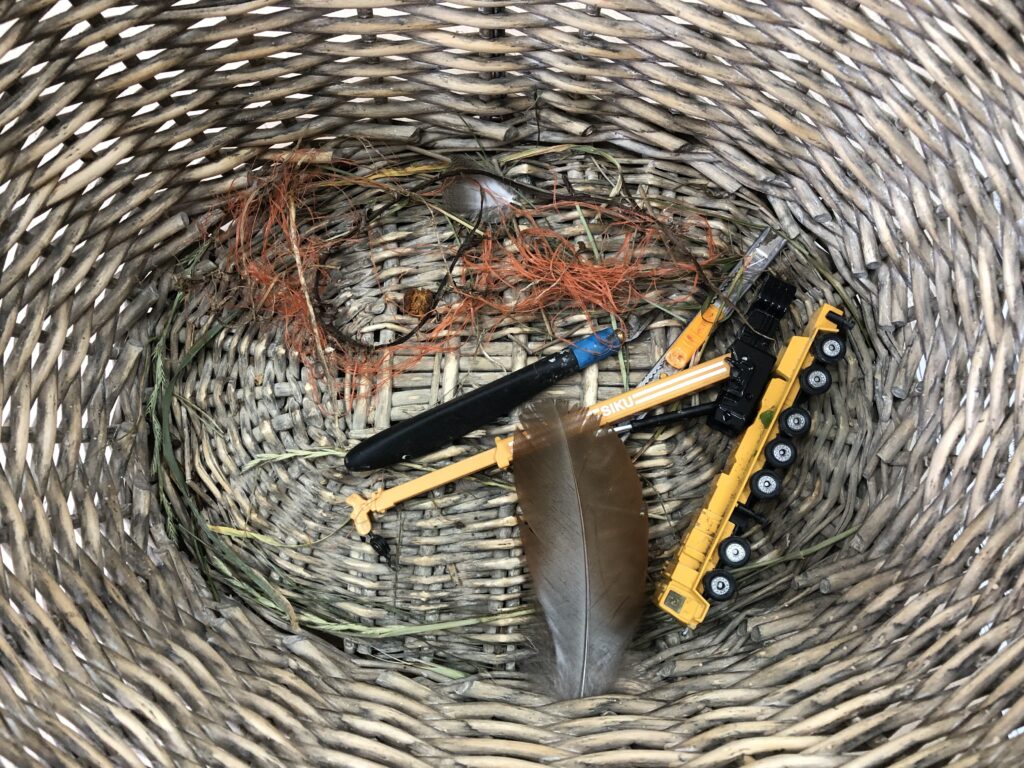
I am interested in artists working with natural materials (fibre artists, sculpturers, potters) and art reflecting on nature. I admire contemporary artists who have become climate activists by using their work to raise awareness and imagine a more sustainable future. I see Olafur Eliasson, Tomas Sareceno, Katie Paterson and photographer/photojournalist James Nachtwey as contemporary inspiring artists.
Olafur Eliasson, a Danish-Icelandic artist, was appointed UN Goodwill Ambassador for Climate Change in September 2019. His work fuses nature and technology. I appreciate that his work generates emotional responses which prompt in viewers to find more profound engagement with the environment. On the website, Littlesun.org, I found the following quote:
“Engaging with art can make the world felt. And this felt feeling spurs thinking, connection, and even action.”
— Olafur Eliasson, artist and founder of Little Sun
I also looked at the work of Michel de Certeau, ‘The Practice of everyday life,” in terms of daily drawing as a practice I find inspiring and helping me notice the sometimes overlooked. I enjoyed researching the work process of artist Xaiajing Yan (sculptures with mycelium) and Ana Mendieta, who displayed in her work an ongoing nature of making, with no clear ‘end-point’, which I think is very much the way I make.
The themes I keep returning to in my work are nature and the search for connectedness between humans and non-humans. I am inspired by nature, and I prefer to draw rocks, plants and trees and try to do landscapes when on holiday to connect with the space/place. My studio has a small cabinet for species I collect – seeds, rocks, feathers, dried mushrooms, and nests. I have learned that deconstructing through growing and working with mushrooms (compost in nature) in my work symbolises change, which will always be part of my human condition. My practice includes working around experimentation, gesture and chance. By working with the chosen materials, I consider having their own agency; I hope one can express my experience and thoughts around how the material and I act on each other. Regarding fungi, I have not learned many scientific names, and I prefer the vernacular names, as it tells stories of how people use their imagination when encountering a mushroom. I believe it tells stories about different cultural perceptions of mushrooms. I look at this as a form of knowledge making; Karen Barad states that making knowledge is not simply about generating facts. (
I am also obsessed with circular shapes relating to mushroom spore prints and started looking at nests and ideas of weaving and thinking about how to translate this into making and connecting it with mushroom spore forms. Making smaller vessels is the learning process to upscaling these ideas. I could work with grass, straw, or wheat, as we have plenty on the farm. I started with twine for the small ‘nest’ below, then moved on to raffia for a more nestlike effect. Making these small nests made me consider the shape of a nest as a vessel – cuplike. This also asked questions about randomness and planned design. I see my attempt as experimental, but that learning happened. There is so much I can learn from observing birds. Birds build their nests using a combination of innate behaviour and learning skills. They do not weave their nests randomly. Nest building is a complex behaviour that varies across different bird species, but it is typically a purposeful and precise process. Depending on the species, birds select suitable locations and gather various materials, such as twigs, grass, leaves, feathers, hair and even mud or spider webs. They then weave, interlock, or arrange these materials to create a sturdy and well-structured nest. The construction process often includes precise movements, beak manipulation, and careful positioning of materials to form the desired nest shape.
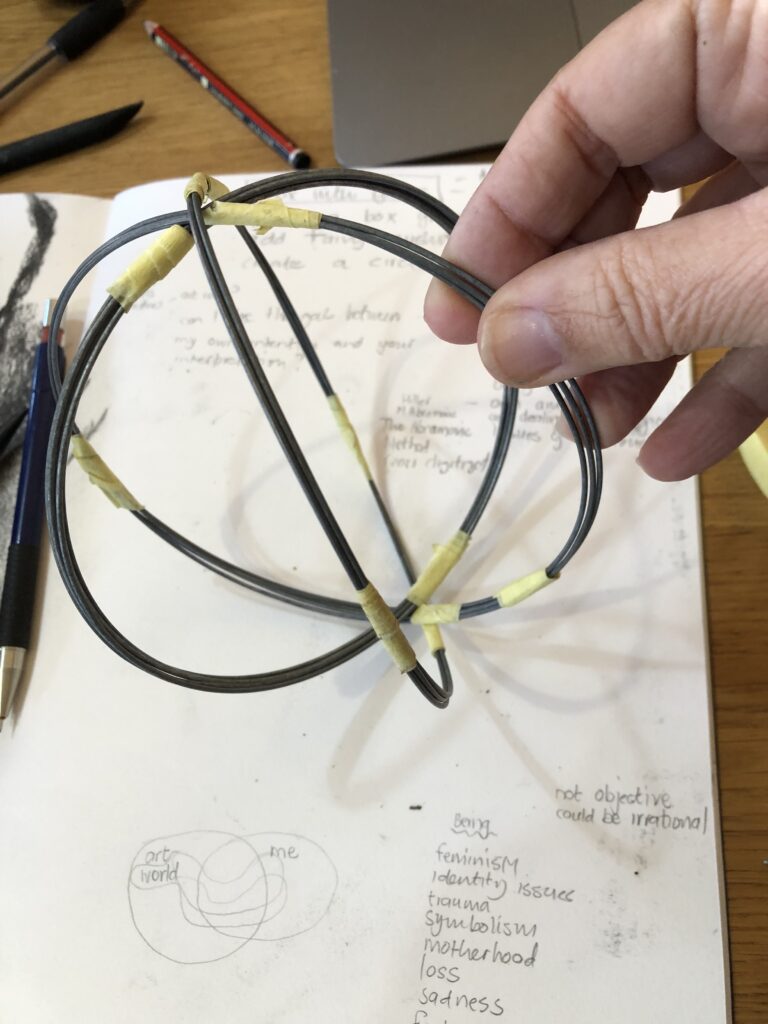
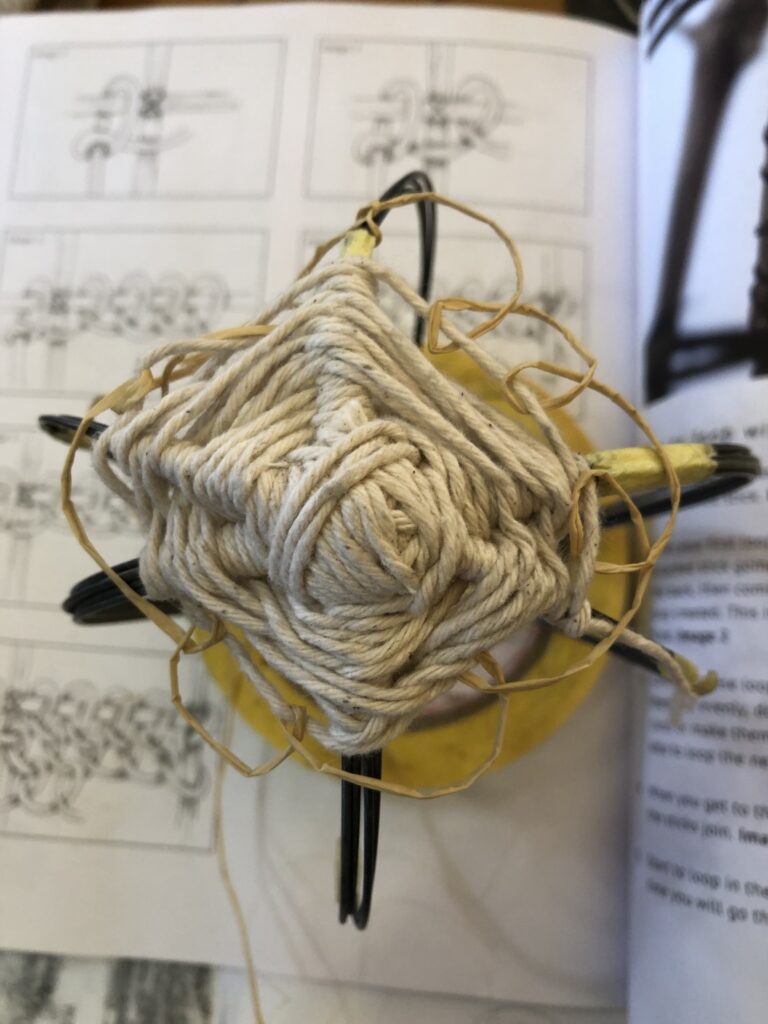
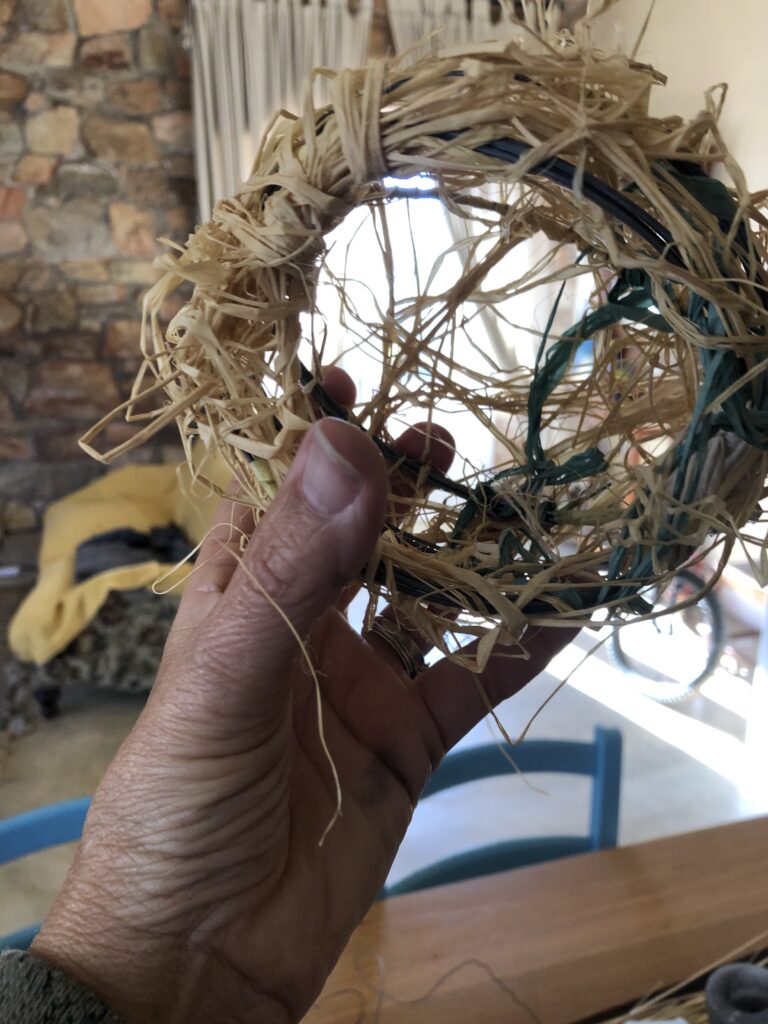
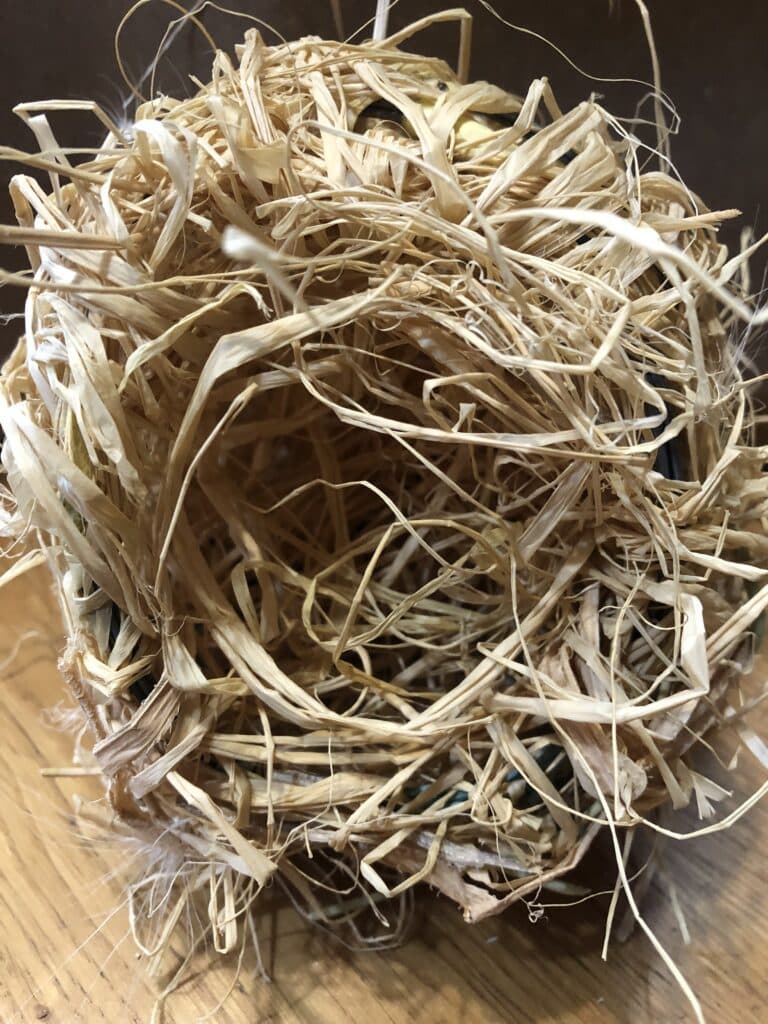
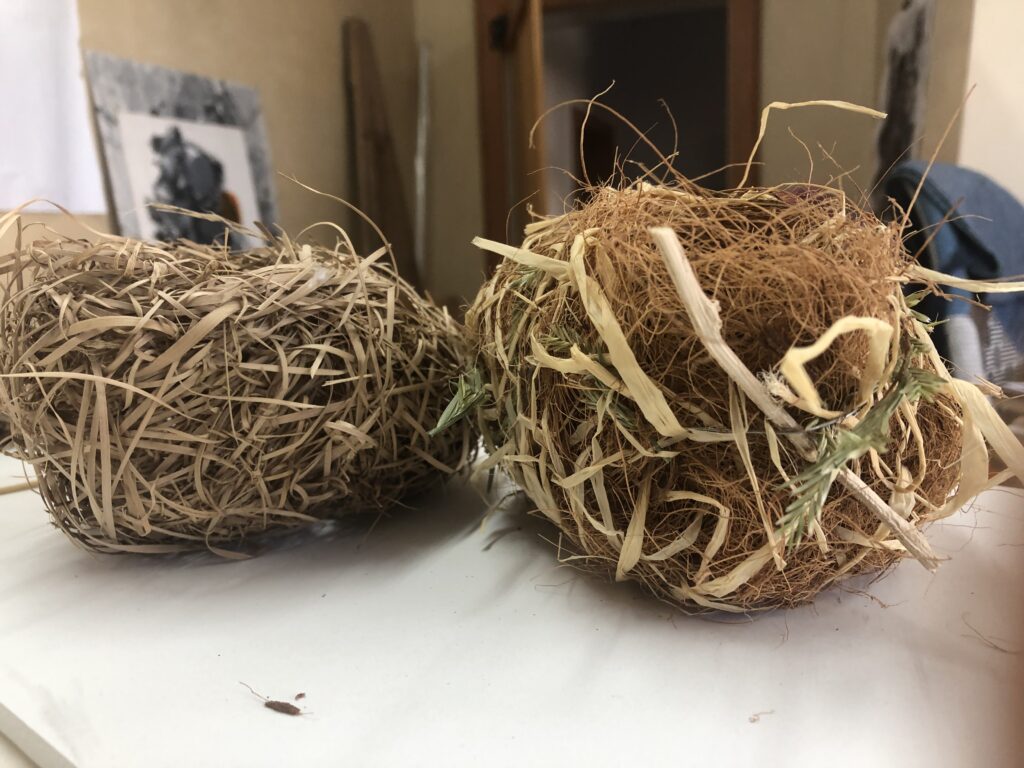
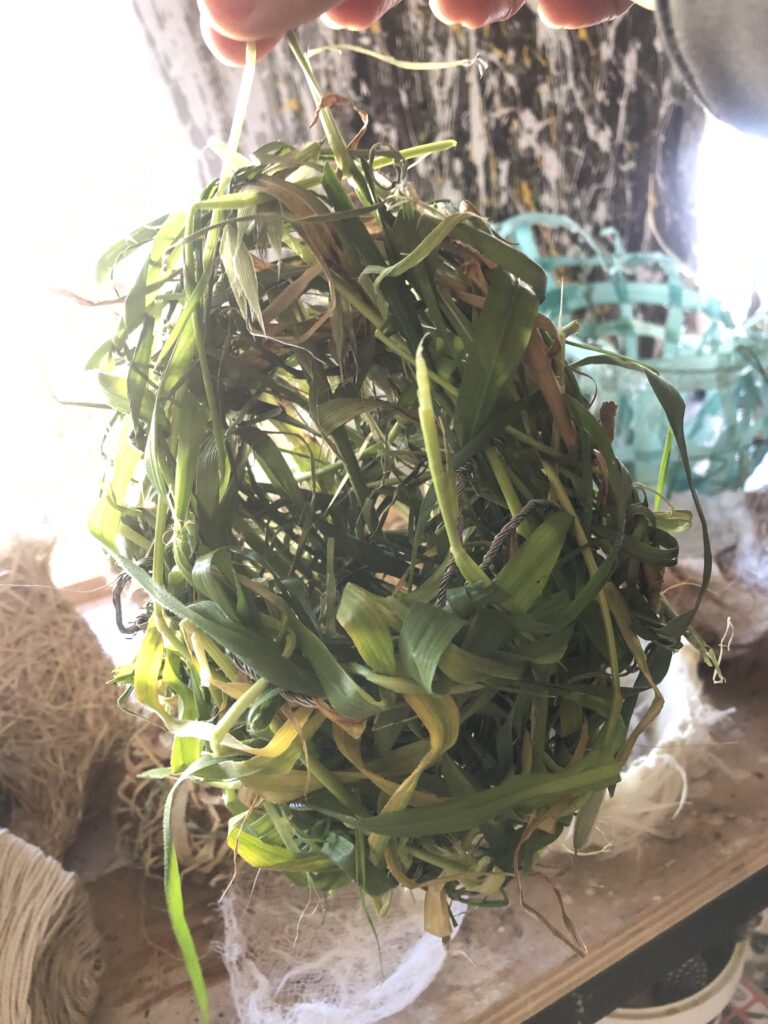
I battled, trying to ‘weave’ a nest and made a round construction with wire to hold my intended form. When birds take on the construction process, it involves weaving or arranging materials in a specific pattern to create a secure and comfortable structure for the eggs and the growing chicks. The construction process may include interweaving twigs, creating a cup-shaped structure, or using mud to reinforce the nest.
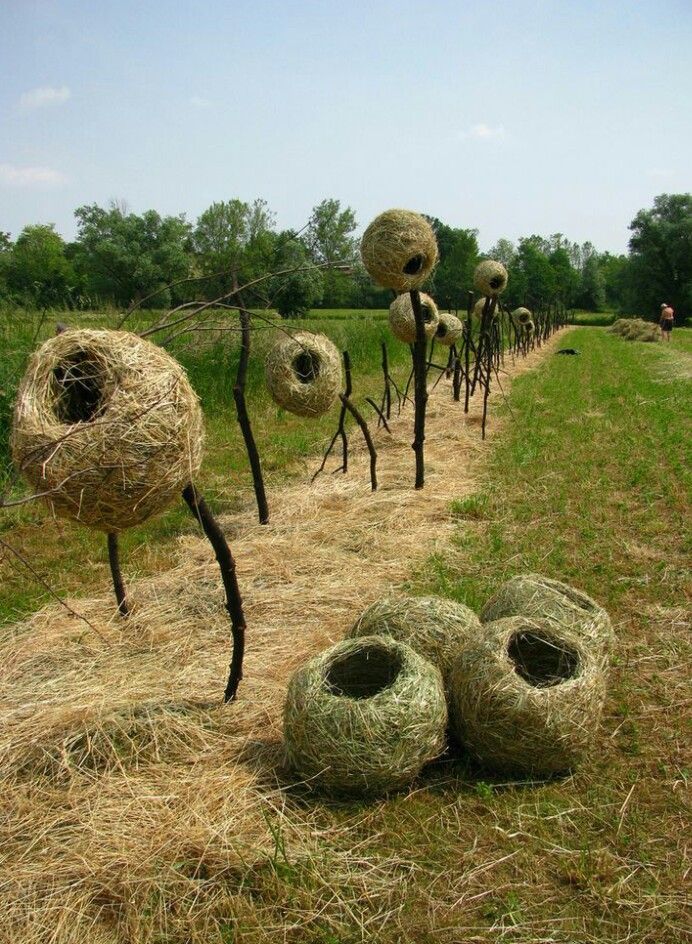
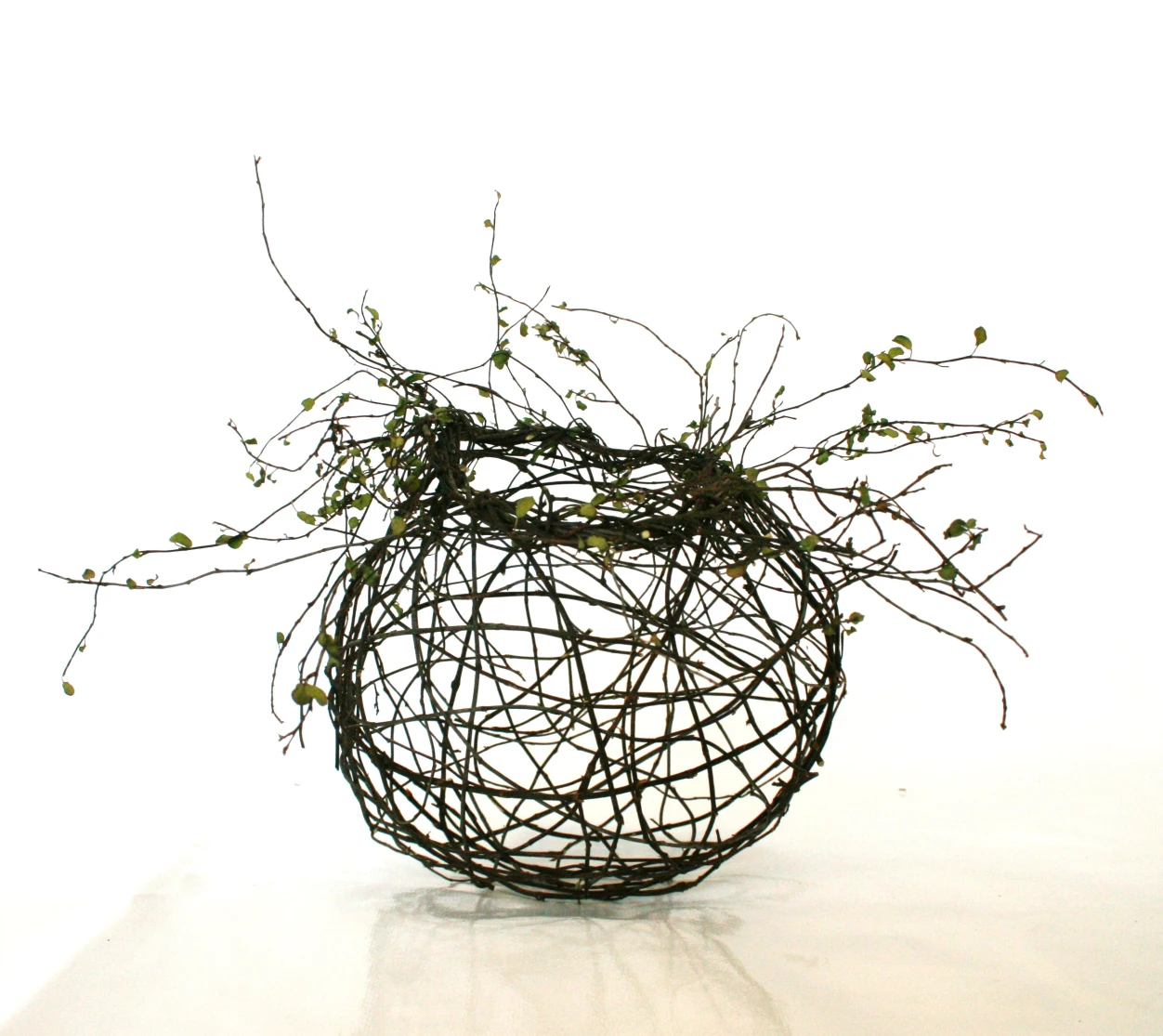
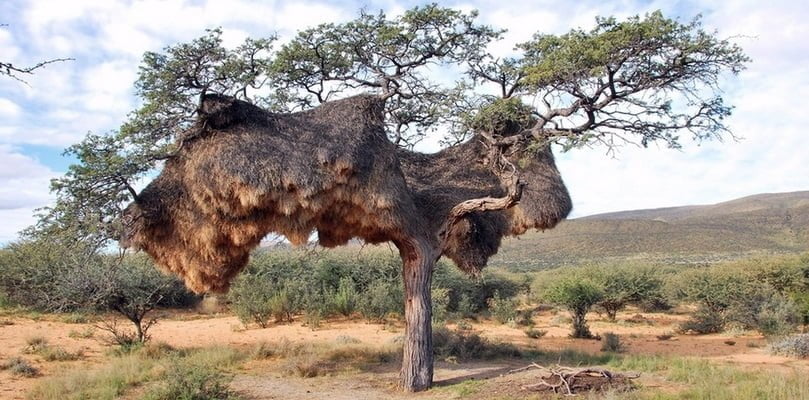
I am inspired by the work and wisdom of Australian artist, Meg Viney : “Many of my works are figurative, and yet I perceive them as vessels. People are containers of life, of love, of one another. A mother contains the foetus and then emotionally contains her infant bringing him/her to independence and maturity. Women are, in that sense, vessels.”
As I did with the first nests, I continued exploring nest-making and found that using a balloon helped create and keep the initial form without using wire. I also found raffia easier to work with than plant materials. I learned that I need to hydrate the plant materials before using them; this added to them being more flexible. I also consider making nests first with clay and then adding/weaving dry material around it.
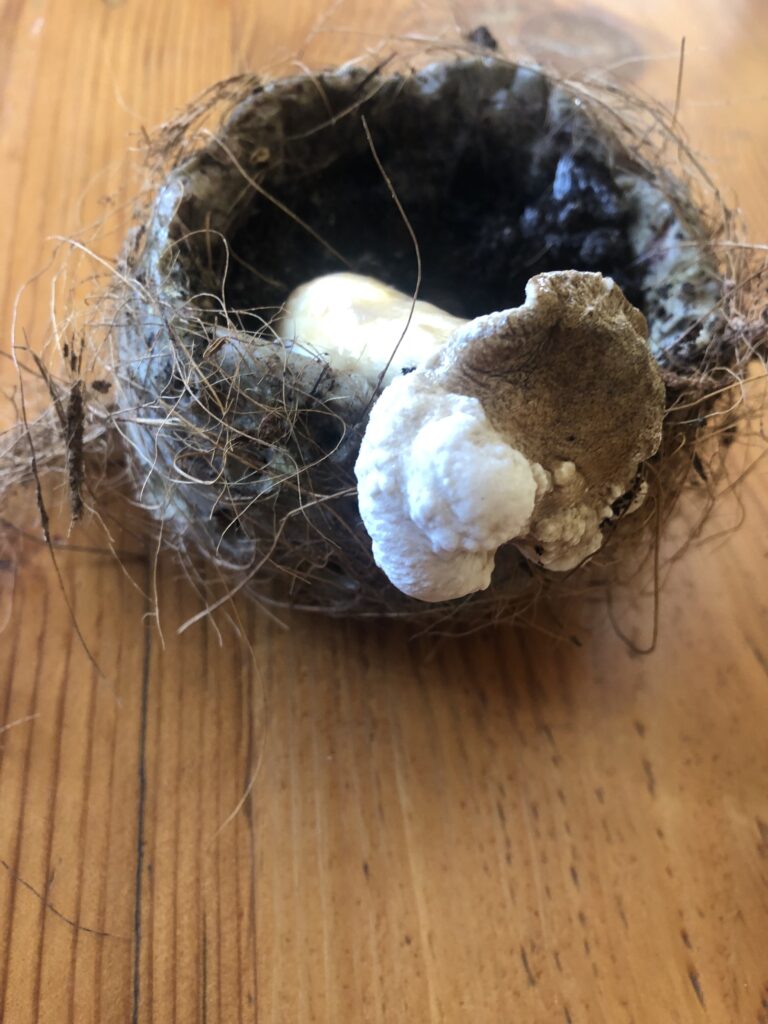
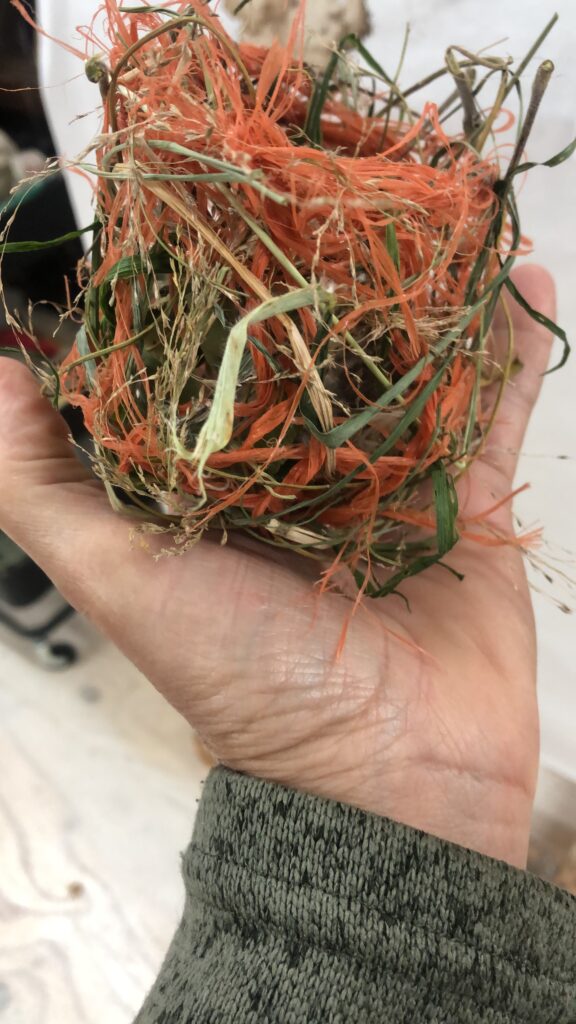
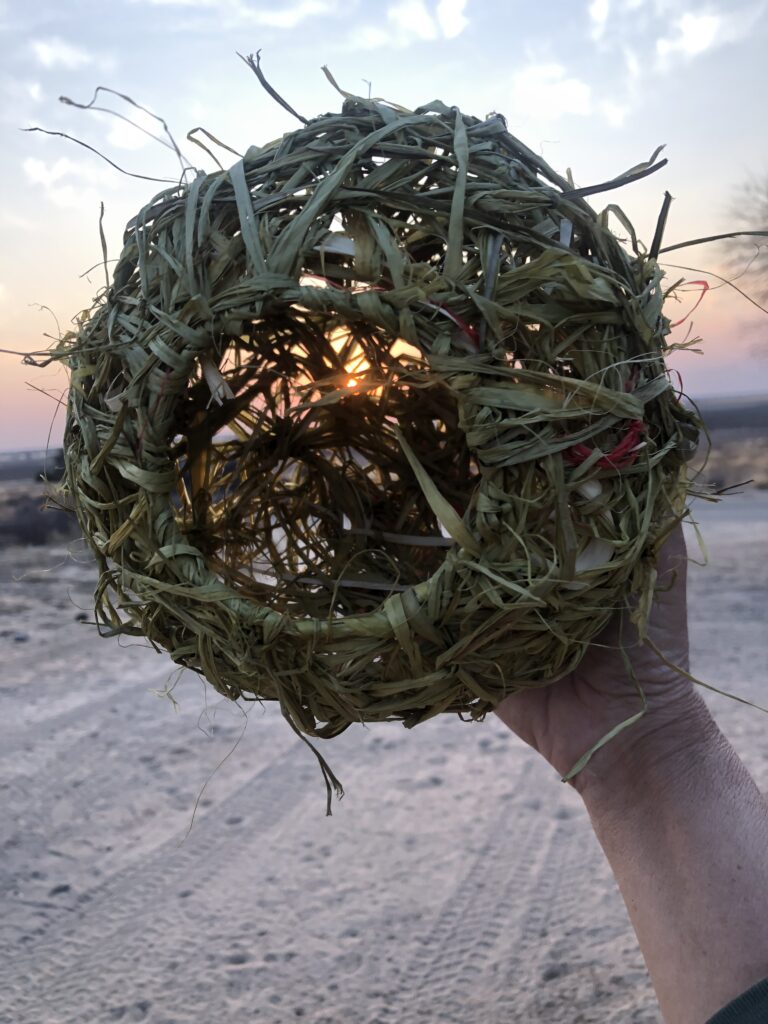


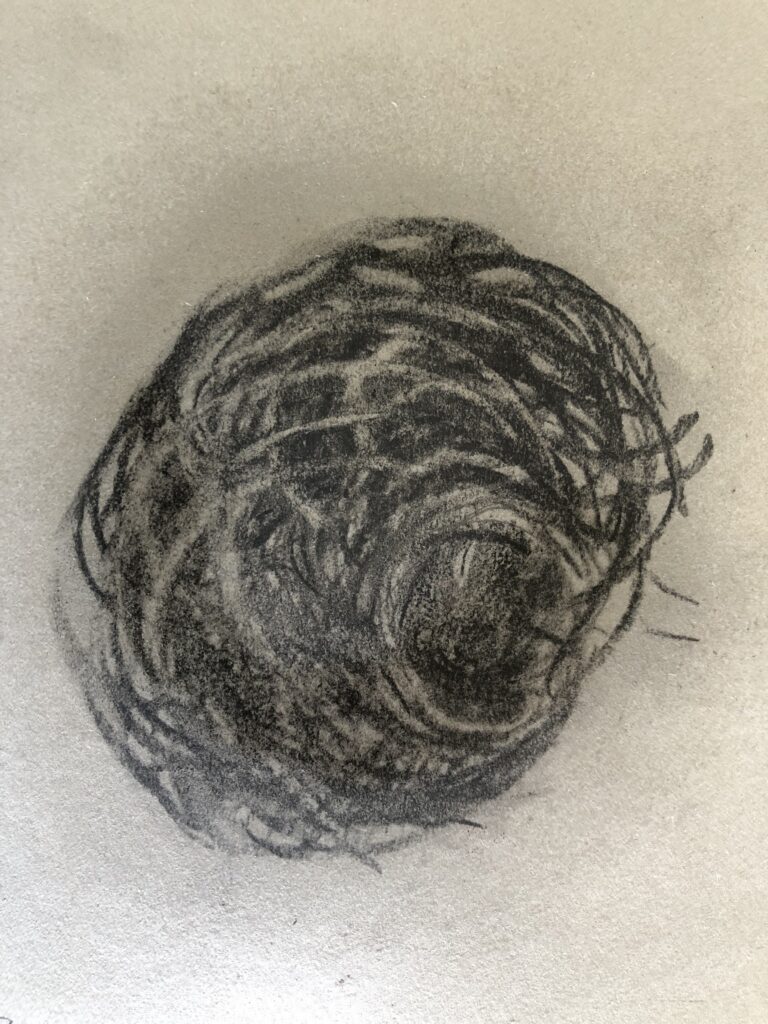
Exercise 1.2: Conversations
Considering how growing my body of work should be an iterative process and looking at it with ideas around an Interior Voice and the Unknown Voice, as suggested in the study material.
THE INTERIOR VOICE
I was hoping that during my making, I will be able to interact with people who interact with fungi, including mycologists, farmers and field naturalists and conservationists. I read books on the topics and follow a few on social media.
When considering making mycelium from mushrooms, I make my growth mixtures and mushroom ink. These were mostly harvested in the 2022 season.
Below is a short video of how I inoculated mushrooms into the medium for a planned hand sculpture. I used coffee grounds as the growth medium. My hands are sanitised, and I wear a mask whilst doing this. I had to hold my camera to make the video. (tri pod unavailable).
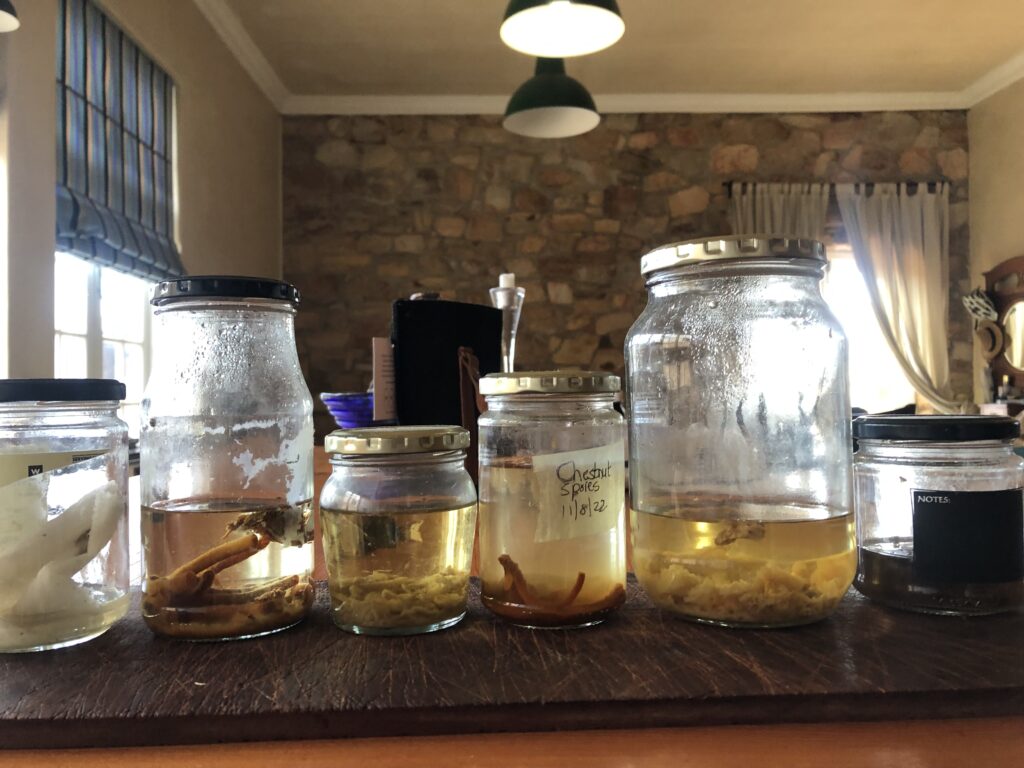
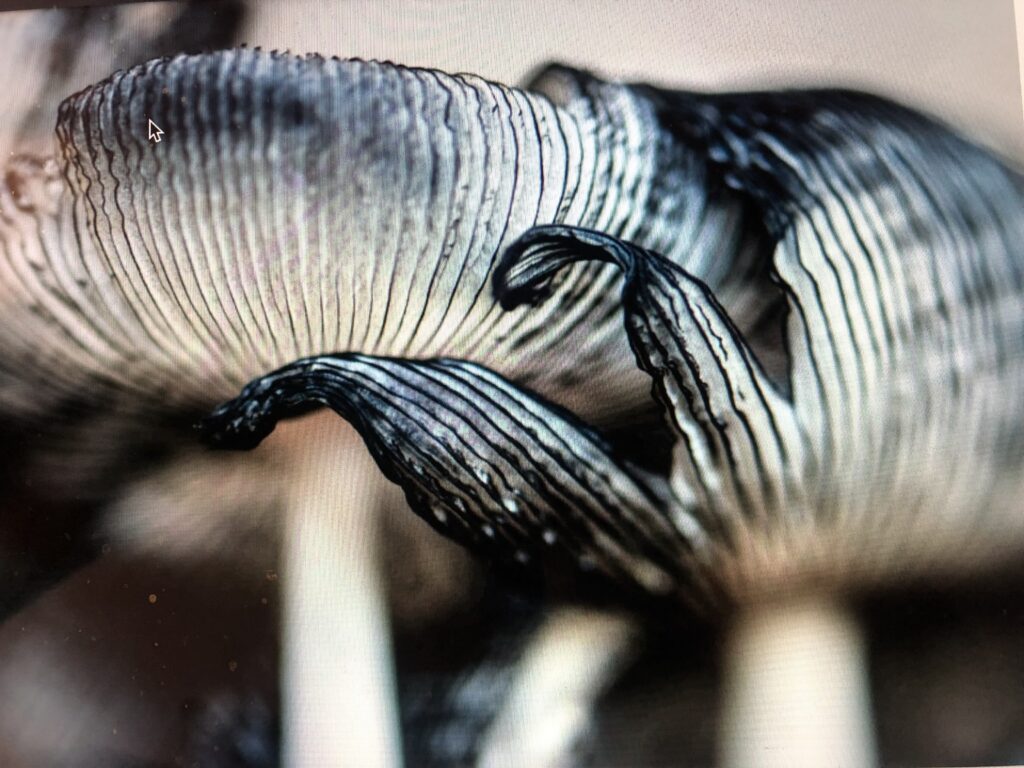
Textile students influenced an Interior Voice as I explored other materials and considered learning new skills: I learned about fibre artists using paper mache techniques in their making. The work of J is inspirational. She works in sculpture and installation art, and making paper is how she creates the materials she works with. Her interests are motherhood, vacancy, loss, renewal and how emotional responses to life’s challenges can evoke beauty. Her forms, such as cocoons and nests, inspired my making. I am considering an online course with her soon (Sept 2023)
Below is a giant vessel I made with paper mache and dried leaves.
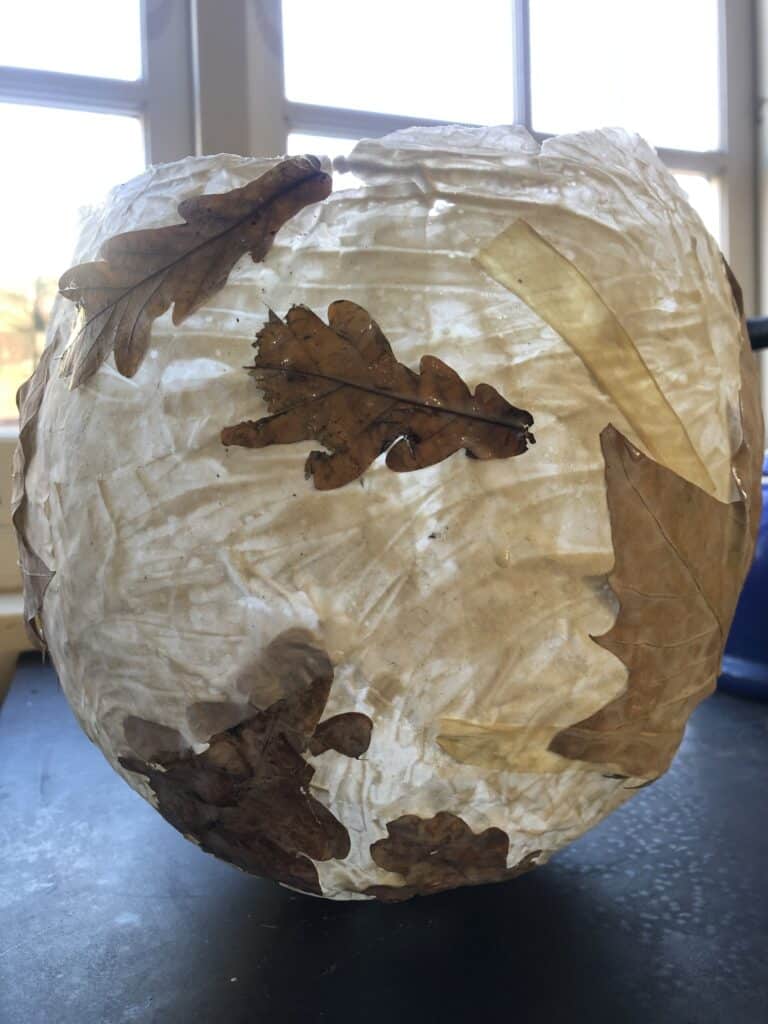
I used a smaller paper mache vessel and a clay vessel I made to see if I could grow mushrooms inside it – a container with fungi. Over the next few days, I could see mycelium starting to grow:
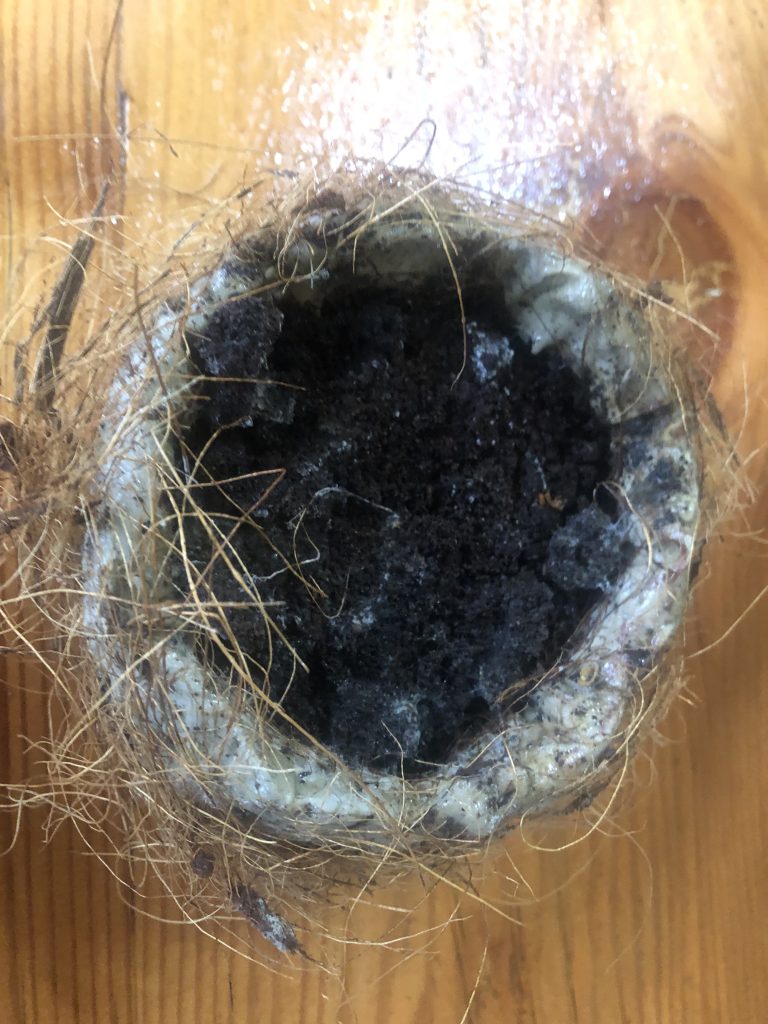
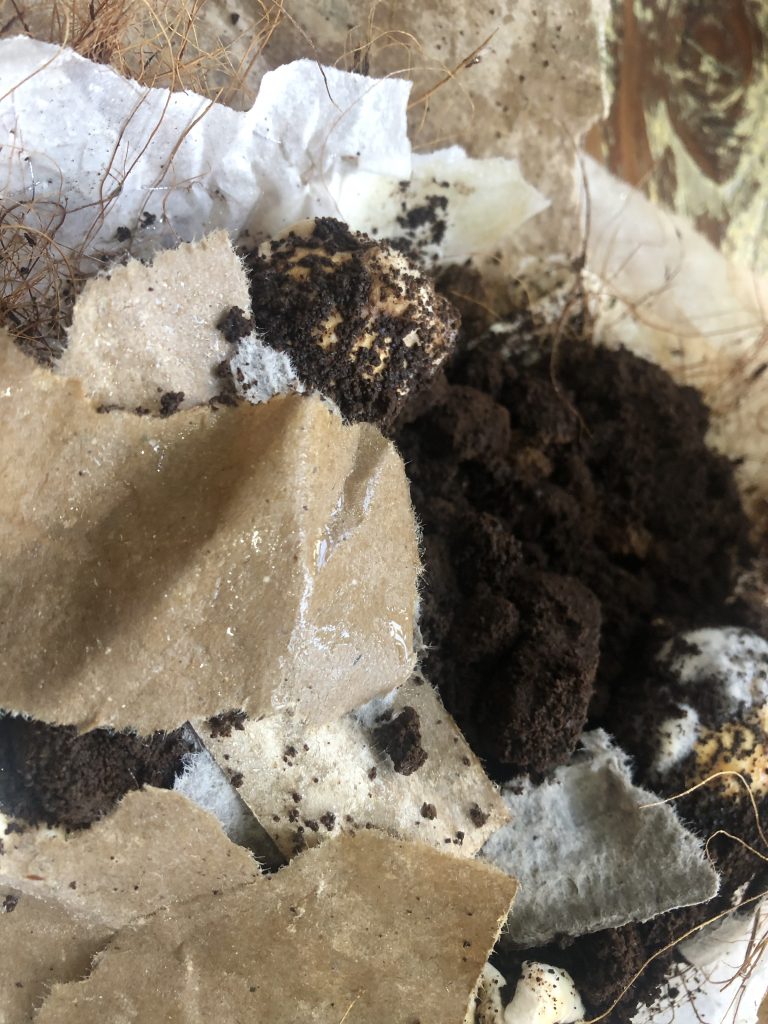
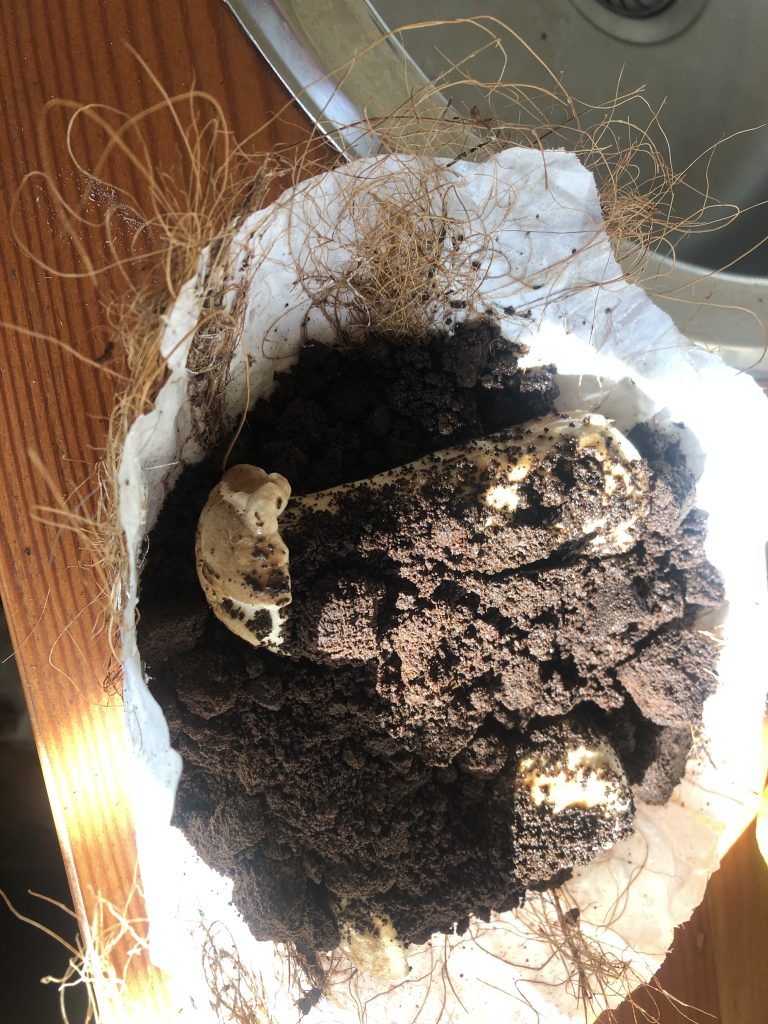
The work in the paper mache became unstable due to moisture – the holder/container was too fragile. I used a plastic bowl as a holder and hoped it would keep the mycelium intact and take on the form of the bowl shape, now being supported by the plastic container. Eventually, I hope the mycelium will feed on the paper layer and thus consume it to become a container made entirely from mycelium. Care and maintenance involve the decision to layer more paper with the coffee grinds. I have to keep it moist by spraying it twice daily with water. I placed the works under glass domes as it is cold in the space where I try to grow to take photos and document the process. I, however, keep them in the dark, as the mycelium still needs to grow. In one container (clay one, with holes), I cut up an oyster mushroom to create more mycelium, and both the works are now in my dark box – wait and see if more mycelium can be grown. I continue to feed the work paper and coffee grinds.
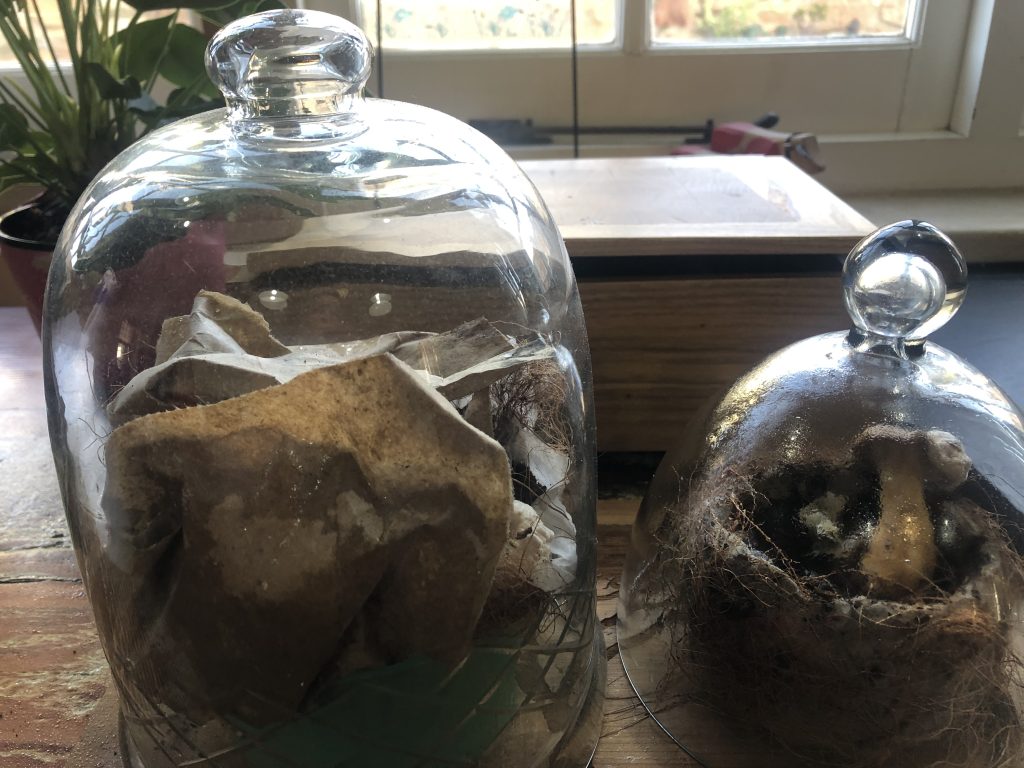
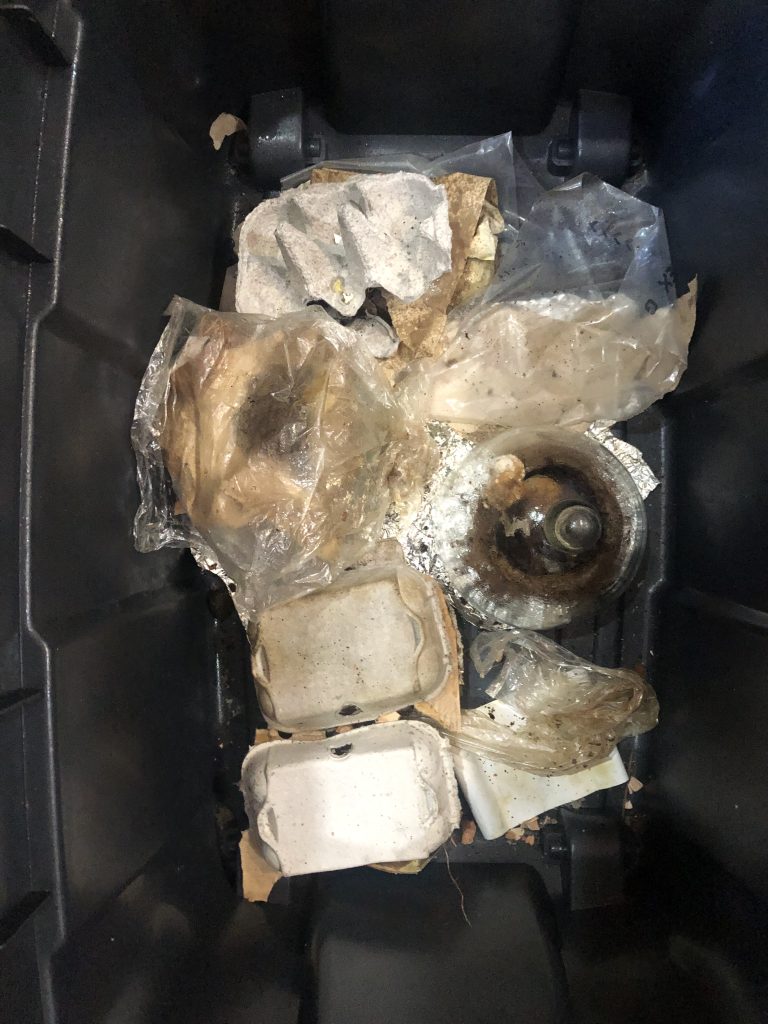
I am aware of the indeterminacy of these fungi – the potential to grow into different forms of their environment and encounters. I learned this idea from Tsing (2015: 76-77) when she referred to mycologist Alan Rayner who described this indeterminacy of fungal growth as one of the most exciting things and contemplated how I try to find ways to ‘collaborate with’ mushrooms. I want to think I that I do try to think/consider what the mushroom would do if…..or how it would react to….. . To me it is very much how I cared for my babies, before we could talk, I had to feel my way around them and react to non-verbal signs. A student discussed my making with me and talked about observing the non-humans and what ‘they tell me’. We contemplated how we go beyond anthropocentrism when we view from a human point of view. Am I practising ‘their’ practice as she suggested in these works?
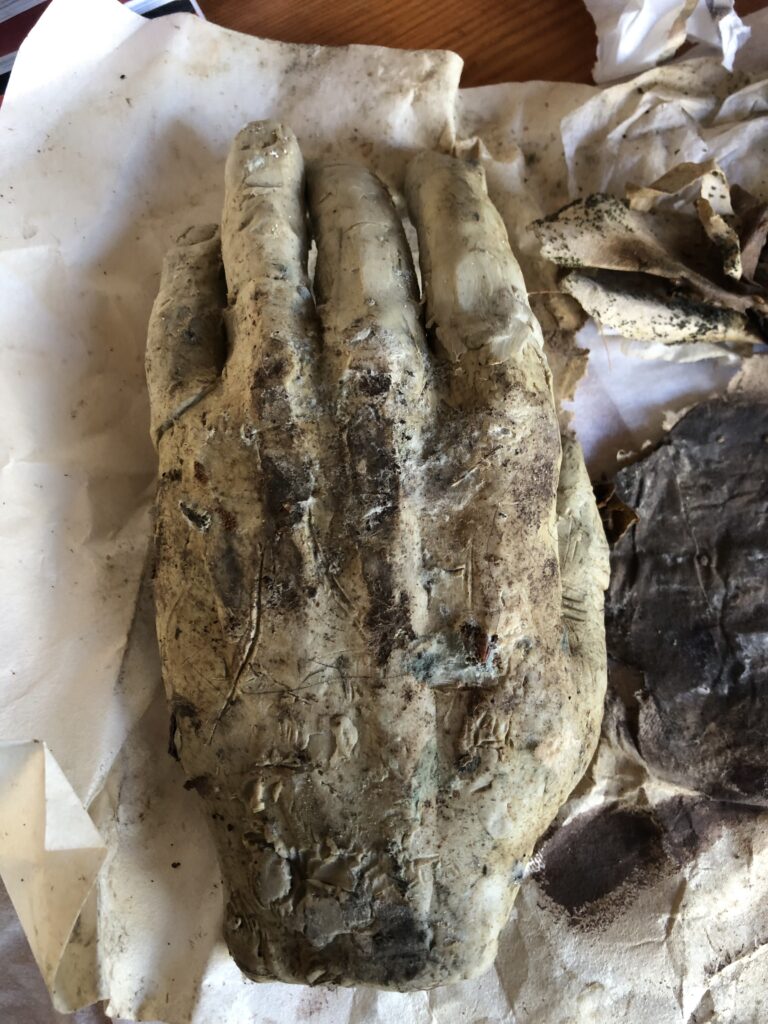
I had a short holiday, and my designated ‘caretaker’ of these works forgot them in my studio, and they did not get moisture for more than ten days. Being inside a box without getting water and oxygen could be devastating. On my return, I had to accept that my projects might be started over again. I am concerned that Winter is ending; soon, it will start to be warmer. The hand sculpture below did not show any further development. I have begun wetting it again, adding some more paper and maintaining moist conditions in the growth box where the mycelium should incubate as I hoped.
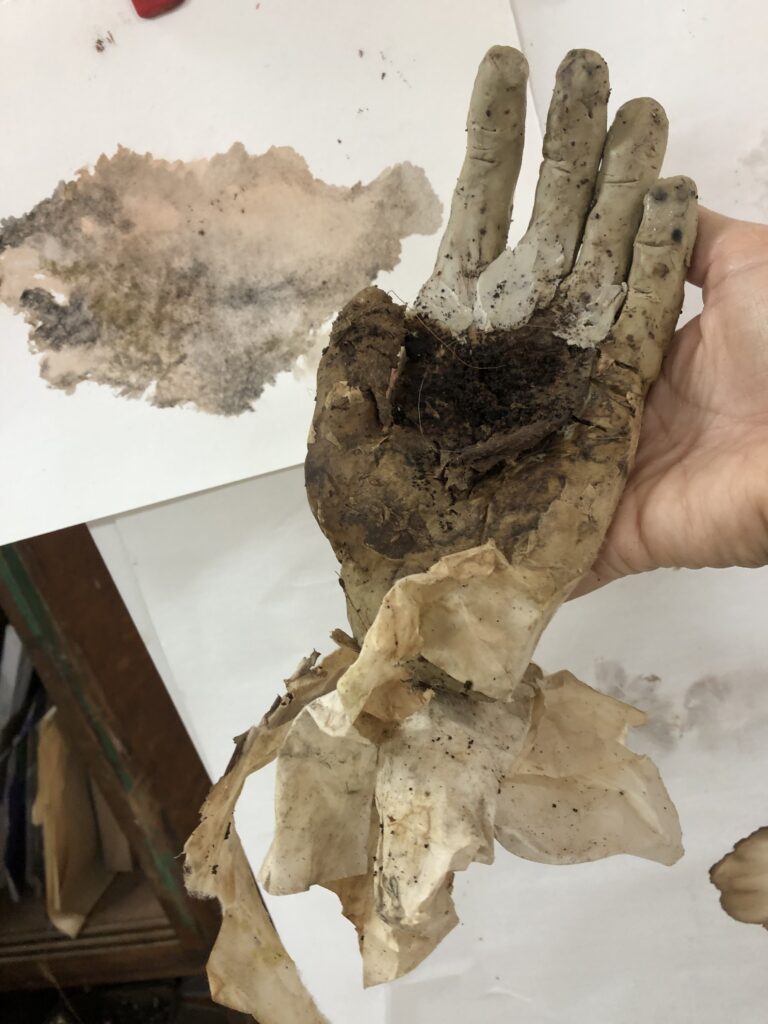
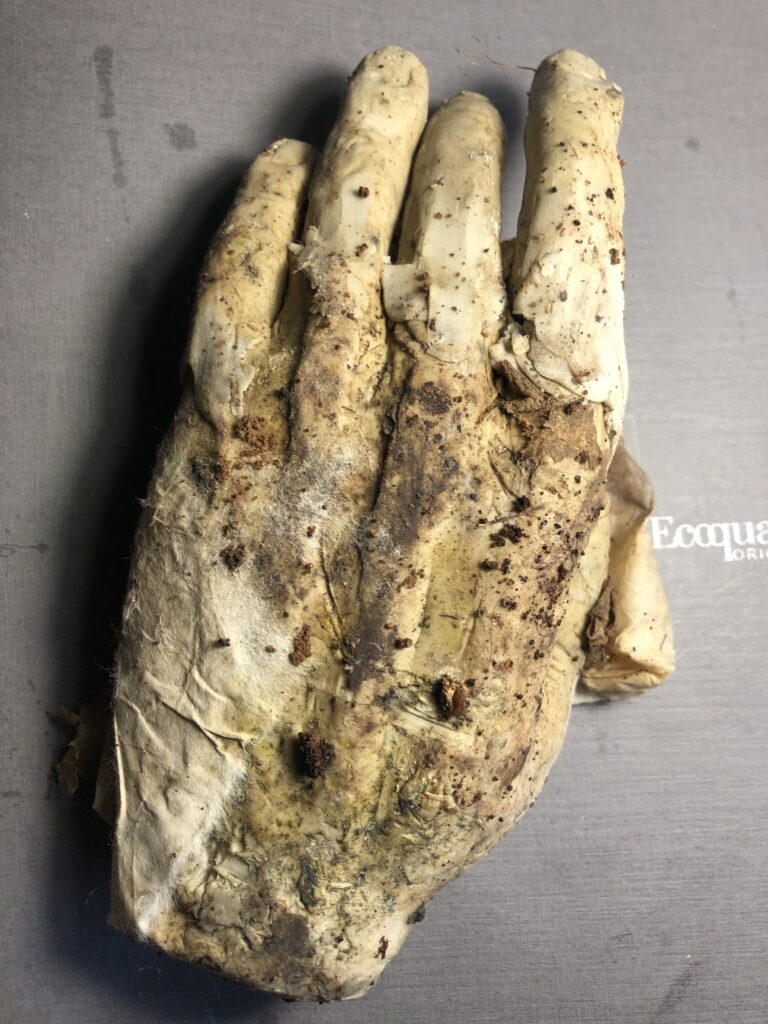
I have since made two hands with by using gloves as my mould and added coffee with the medium. I explored the plaster of Paris for stability and ‘holding together’ the sculpture whilst the mycelium has not grown yet. These hands should be stable and quite rigid once the mycelium grows into the medium.
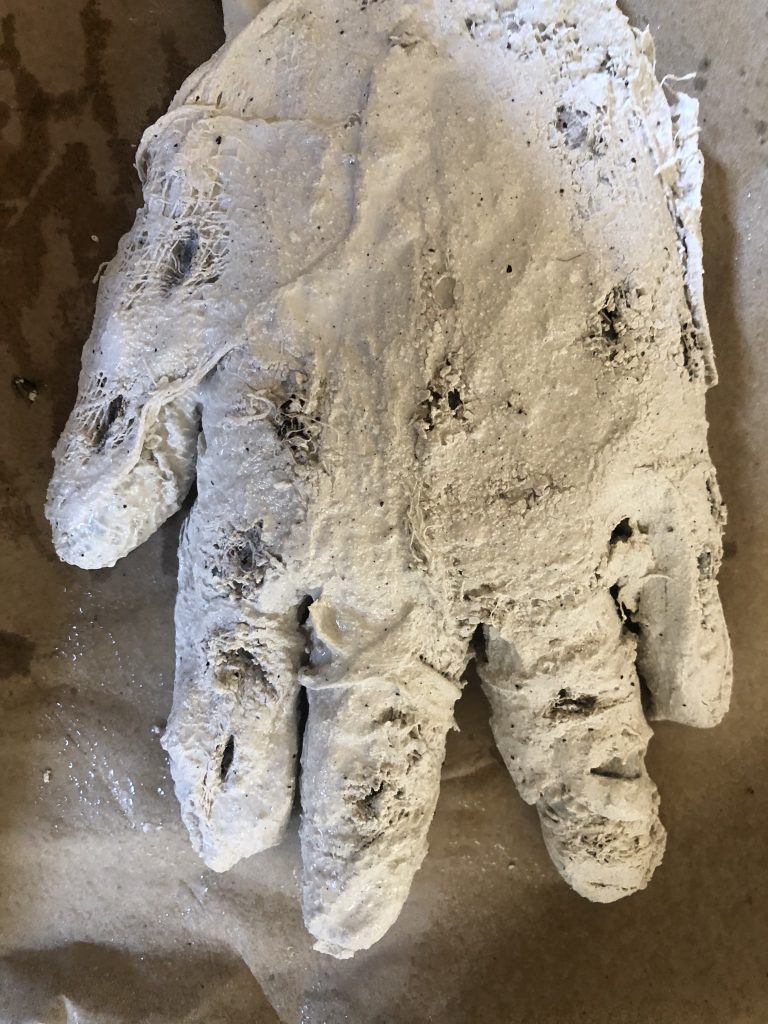
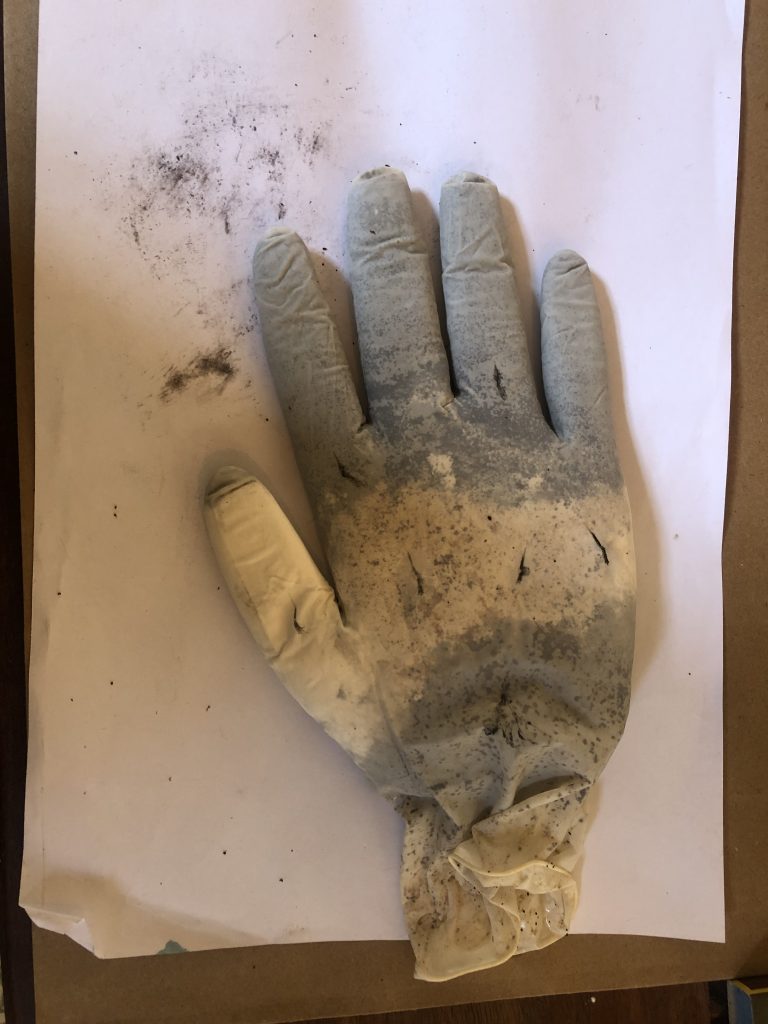
I am planning to make a hand with only growth medium and paper mache. I have to plan the making of a paper mache ‘mould’ and will also experiment with gauze as a material to hold the form. I can consider making moulds, but I want the mould to be able to breathe and allow for the mycelium to grow on the medium, this means I need to be able to keep it moist and have access to the growth medium when considering more ‘food’ or water during the making process.
The work below is of Jaqueline Mallegni. It reminded me of fungi forms and inspired making. I look at these works and see the potential upscale. I could use it in the landscape around me as an installation.
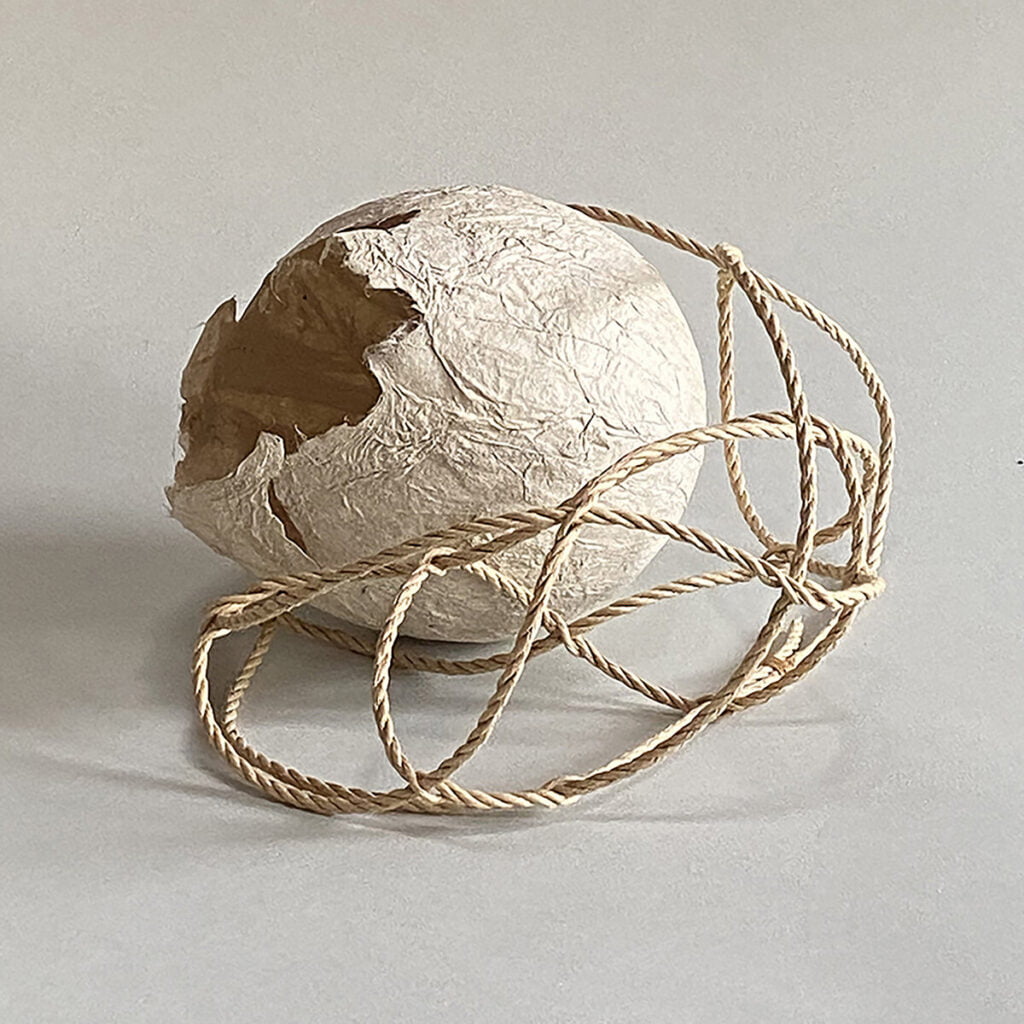
I used soft wire, twisted it to make it thicker and then started making a nest or circular form. This is a small sculpture.
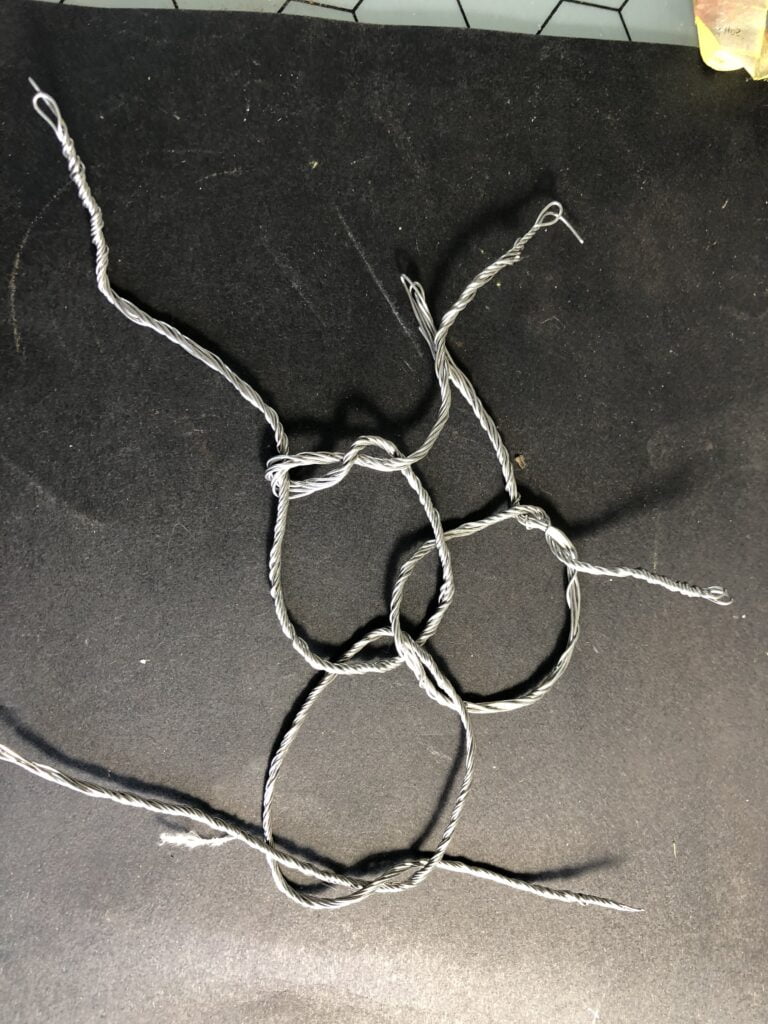
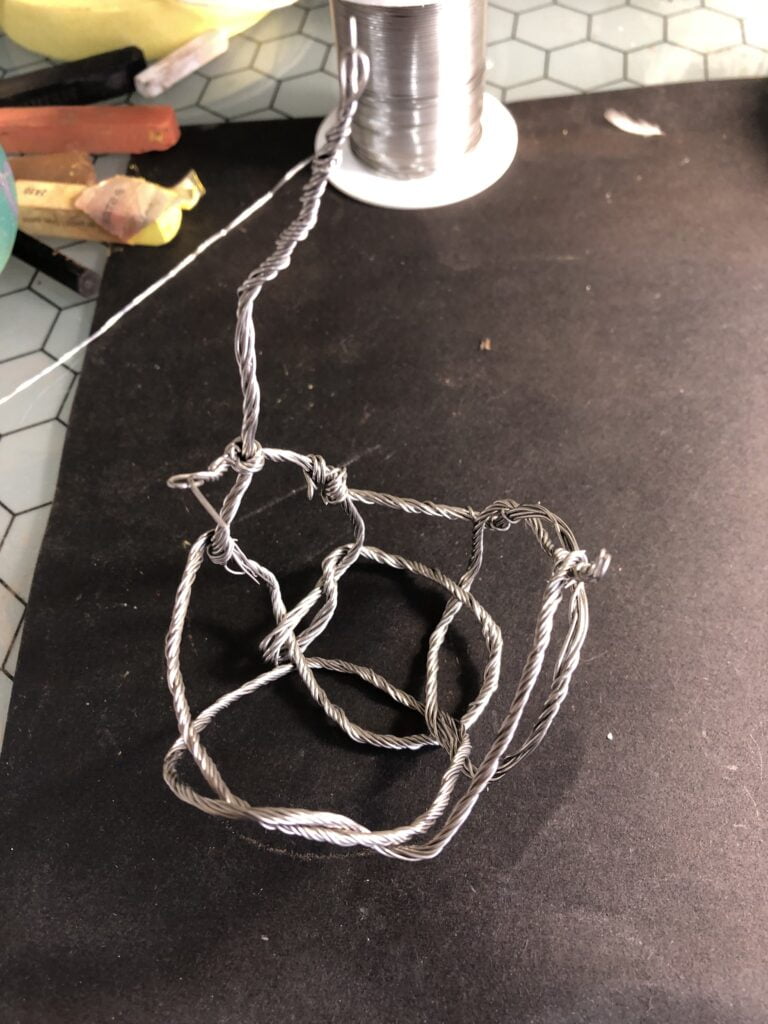
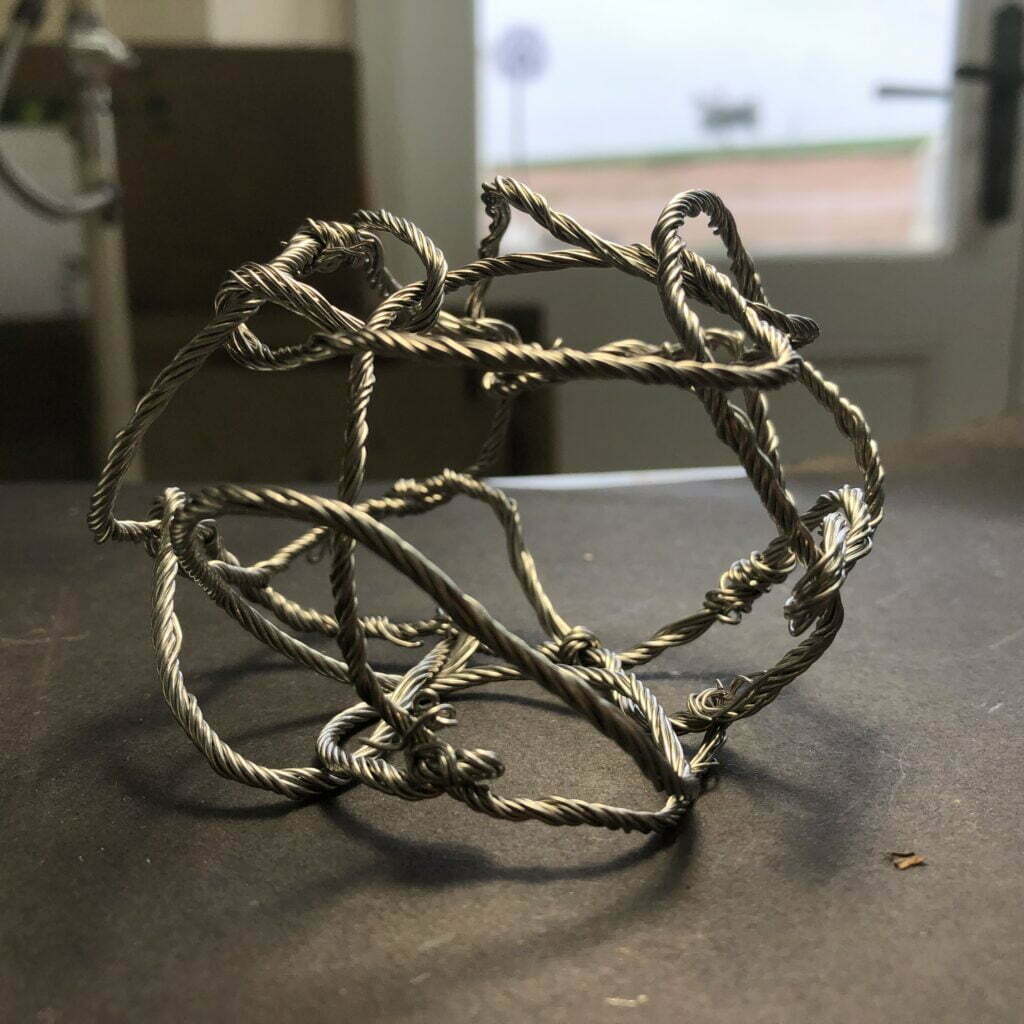
I tried to work with fine gauze, a small rock and wall paper glue to create a small vessel. I am motivated to go much more prominent in scale and consider to found round forms in different sizes to shape these vessels.
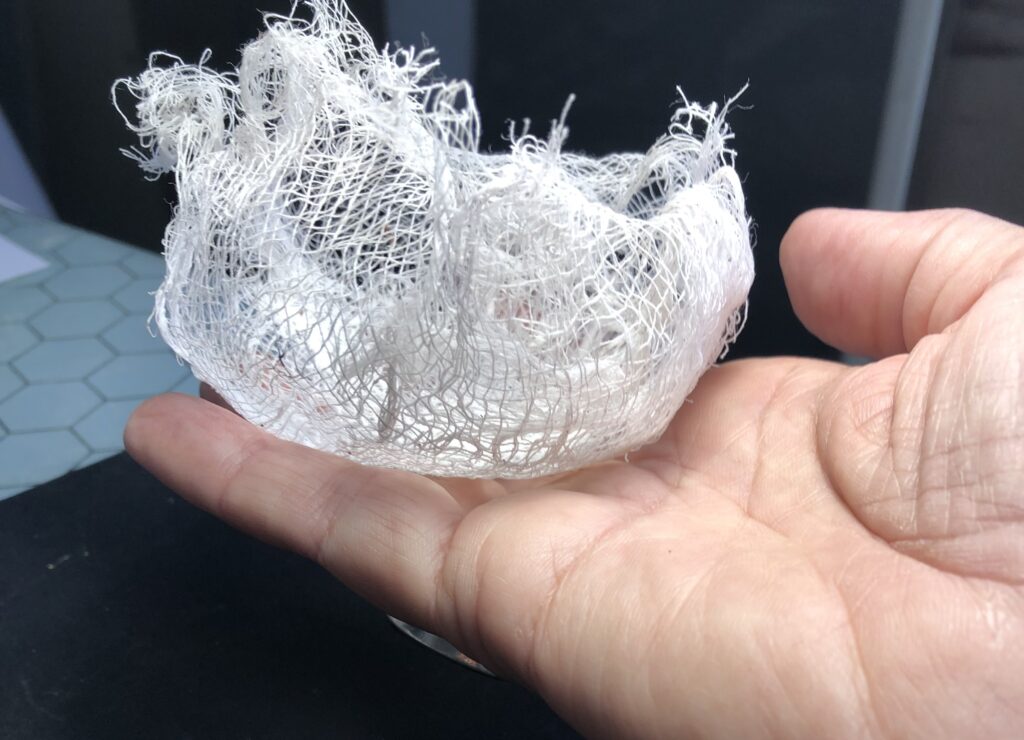
I ordered a book by Ruth Woods, Finding Form with Fibre (2022), and it arrived in late June, just as we took our ten days trip to Namibia. I gathered grass in nature and tried to make small samples, inspired by my reading of the making shown in the book.
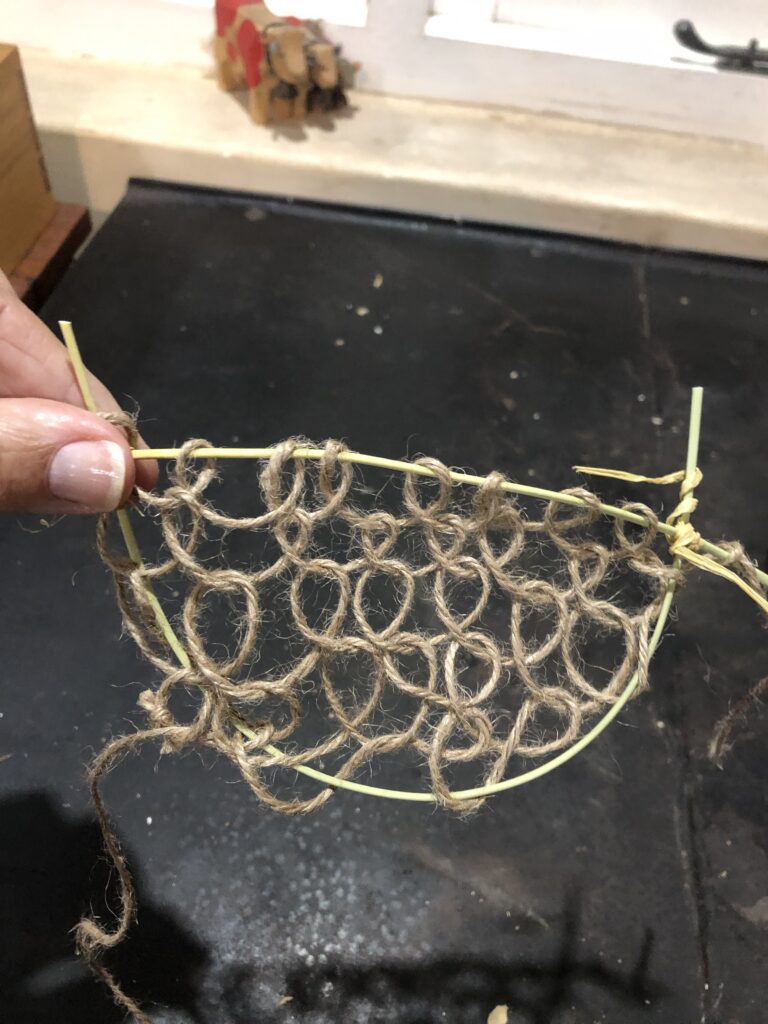
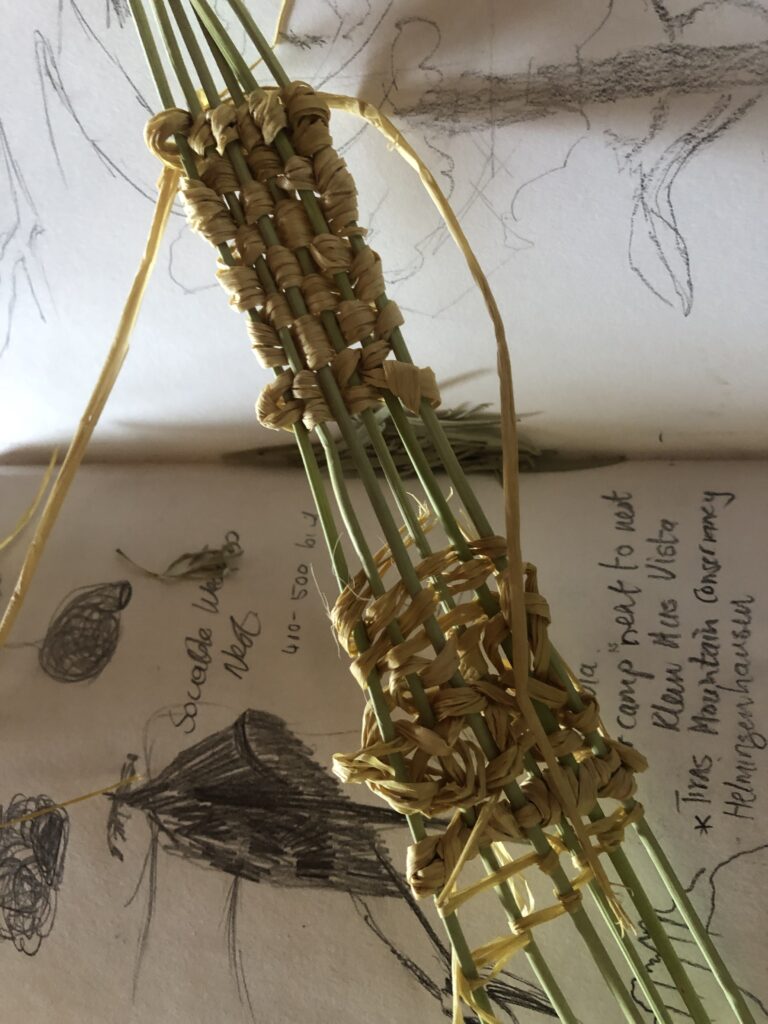
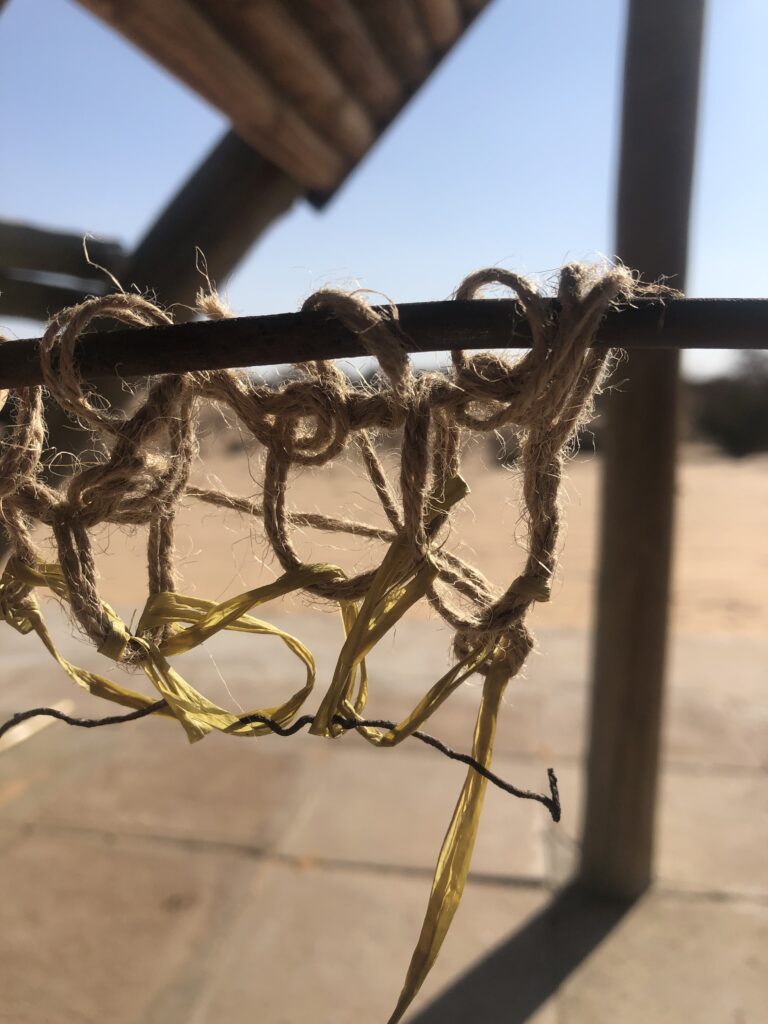
I am more inspired to make nests and explore circular forms of this and spore/fungi for my body of work.
Fairy Rings and Fairy Circles:
My idea is to bring my own making into a process where I could regenerate an area where the lawn was ‘killed’ with Roundup. This could become an extra site for exploring making with nature. I started using the word ‘para-site’ as I learned from research-creation after reading Knowings and Nots: Methodologies and Ecologies in Research Creation ( Natalie Loveless, 2020).
(I have since been contemplating changing the name. In my Research, blog, in Part Three I consider my reasoning: https://karenstanderart.co.za/2023/07/26/mycelium-and-fungi-work/ I have lately been thinking of the separate work processes within my practice as investigations and ‘sites of practices’ could work to describe these. F M Sullivan writes about three areas of visual arts practice: Making in Systems, Making in Communities, and Making in Cultures, and he used the idea of ‘sites of practices’. (Chapter 5, Artist as Theorist)
Thinking about activities in the broader arts, I recently started a conversation with an academic friend concerned about sustainability transitions, renewable energy, science and innovation policy. He wants to collaborate with me on an experiential approach to facilitate transformation. This will ask me to look at and read about experiential learning. I know a little about John Dewey’s ideas about experiential learning. Ideas that I think I understand are about having time to reflect and make connections between experience and knowledge one learn from and experience. Once reflections are more visible, it enriches thoughts and actions. I feel strongly about my (being) open-minded and showing curiosity and vulnerability in my making, explorations and research. For our intended collaboration, artistic experimentation should be the mode for enquiry and discussing outcomes. I can imagine using images to capture the difficult things to say – ways of expressing things. We need to have conversations in our community about fears and concerns concerning nature – how and where can we share these concerns, like why are we as a country still so reliant on coal for generating electricity? How can the community get involved in wind or solar energy innovation? What benefits are there for the community to become involved?
THE UNKNOWN VOICE
The study guide referred me to the work of artist Katie Paterson. I am attracted to the idea that her work is practice-based- research and how her collaboration with people in the field of science/technology created new explorations for her as an artist. I admire the efforts in work to connect on deep levels with an audience and draw attention to our relationship with Earth and the serious concerns we need to face. I also admire that the work touches on loss (mourning?)without trying to represent it.. more of a performance that makes one so much more aware of the consequences, which could be irreversible. I am struck by her ability to convey this knowledge (scientific) in such a profound way. I think her work is very much research in making.
I contemplate that In Paterson’s case, the final work (exhibition) is not the main feature of her research, nor is it the completion of a work/installation; it is about this whole process of making and learning through making/materials/other voices/influences and then using this with technology so set up, curate and almost ‘happening’ and share it with viewers. I virtually experience that as the artist showing her transformation by making (the effect of making on her).
NOTE TO SELF: [this learning is something to consider in my Research project]
Research point
Looking at mushrooms/fungi I found an Australian start-up co-called Loam, which uses fungi to help crops capture carbon in the soil—and keep it there. They are most interested in working with black fungi called dark septate endophytes. These fungi can convert CO2 from the atmosphere into carbon to stabilise carbon aggregates in the soil for hundreds, or even thousands, of years. Loam uses these selected endophytes to inoculate the seeds that farmers plant carefully.
I enjoy contemplating the role of art: could I critique environmental issues and influence perceptions? My interactions with mushrooms are primarily about being outside or present. To me, the experience is about wandering and wondering. I can touch, listen, observe, and even smell or taste mushrooms here. I found that by joining groups on social media who forage, I learned more about stories around mushroom foraging and how mushrooms captivate people. I engage in comments about the beauty of a species, spores taken to identity and general admiration for the diversity that one can experience.
By considering Karen Barad’s refractive approach, I believe mushrooms have shown me that knowledge creation is not just about finding/gathering facts, but about contextualising as one uses insights from
different disciplines and compares them. (Barad, Meeting the Universe Halfway, p 91) I hope that this part of my work (making and research) shows learning from a lived experience, through interaction with fungi, smelling it, looking at it, working with it….al about my wanderings in nature and bringing that into my studio. I agree that knowledge is also held between our senses, like a way we learn to read a forest, by engaging our senses to connect with. Barad writes about knowing because ‘we are of the world’, thus part of its becoming. (Barad, “Posthumanist Performativity,” p 829). I have not had many opportunities this season to forage mushrooms, and one of my most sensory experiences is to touch the mushroom – not just read about it. It starts almost as an excitement, the finding or seeing a mushroom in nature (discovery), then looking at its habitat where it grows, then its shape, colour, size, textures, smell and form and only later taking a spore print and photos to identify it. (around our dam in front of our house, the many water birds sometimes lead me to mushrooms – some of which have eaten parts of the fruit) In The Spell of the Sensuous, Ecologist and philosopher David Abram, describes the experience of having a meaningful interaction in nature as being in the ‘world of our immediate experience, as we live it, before all our thoughts about it. It is that space before things become facts. Is it about a close observation with the senses?
When walking, I look at the pine trees or pieces of rotten fallen trees, where I find mushrooms in my area; I also consider seeing them after the rains have fallen. I am still a novice, but I have felt that one acquires a particular sense when looking for mushrooms. I am also aware of care and maintenance ideas when looking to find mushrooms – it is a slow experience, I primarily do not forage to eat, and I try never to pull out a mushroom. I cut the stem. I try to cut them and leave the roots/mycelium in the soil. I will continue to keep up a list of sightings for mere recordkeeping and part of collecting knowledge and material for making. If I think about my recent attempts to grow mushrooms, I consider time and slowness part of the process. It is as if this part of my practice asks me to slow down and observe and care more.
In recent days since I could get back to walking (August 2023), I have not been very successful at finding mushrooms. It has been cold and raining, and I must be patient again with this idea of slowness coming to the front. Below are the encounters during August 2023. The last image shows an empty basket – I collected two feathers, picked up a grandchild’s toy and some rope. I do have good memories of walking the site I have foraged in the previous season and enjoyed the views onto the dam and sounds of the waterbirds.
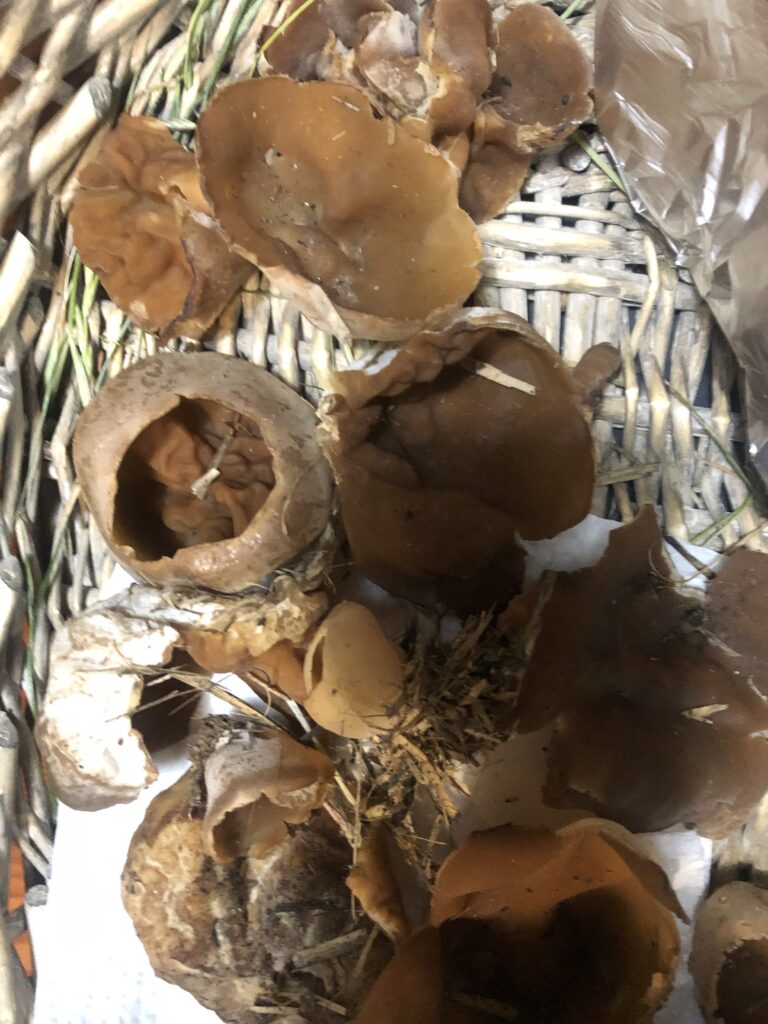
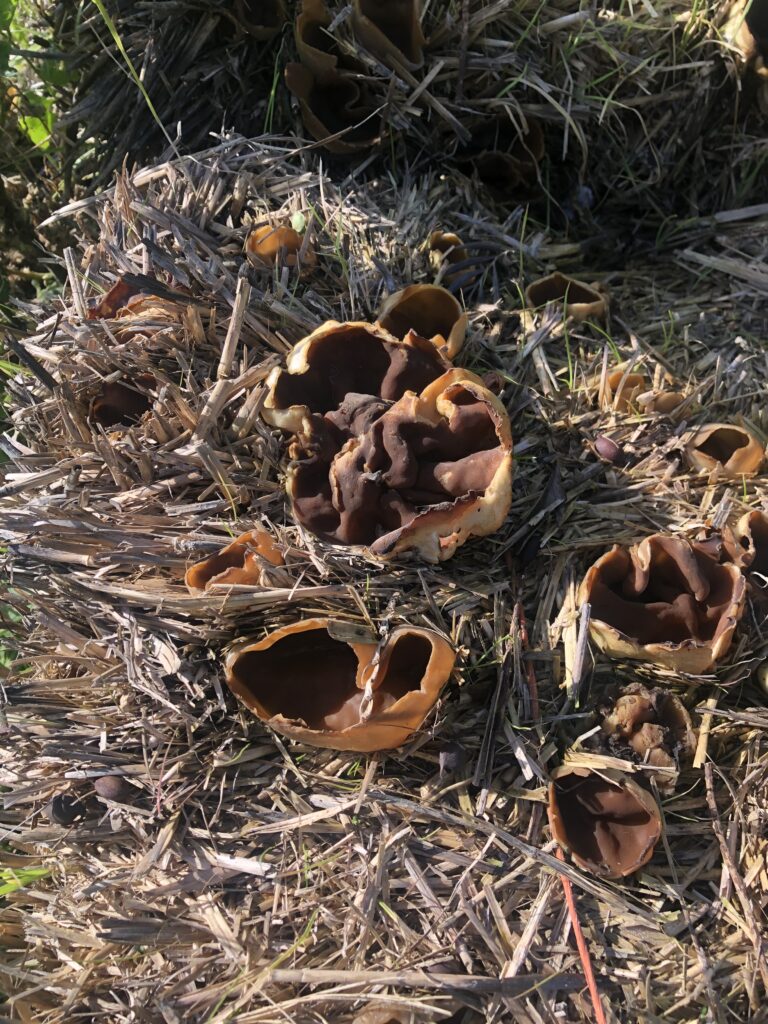
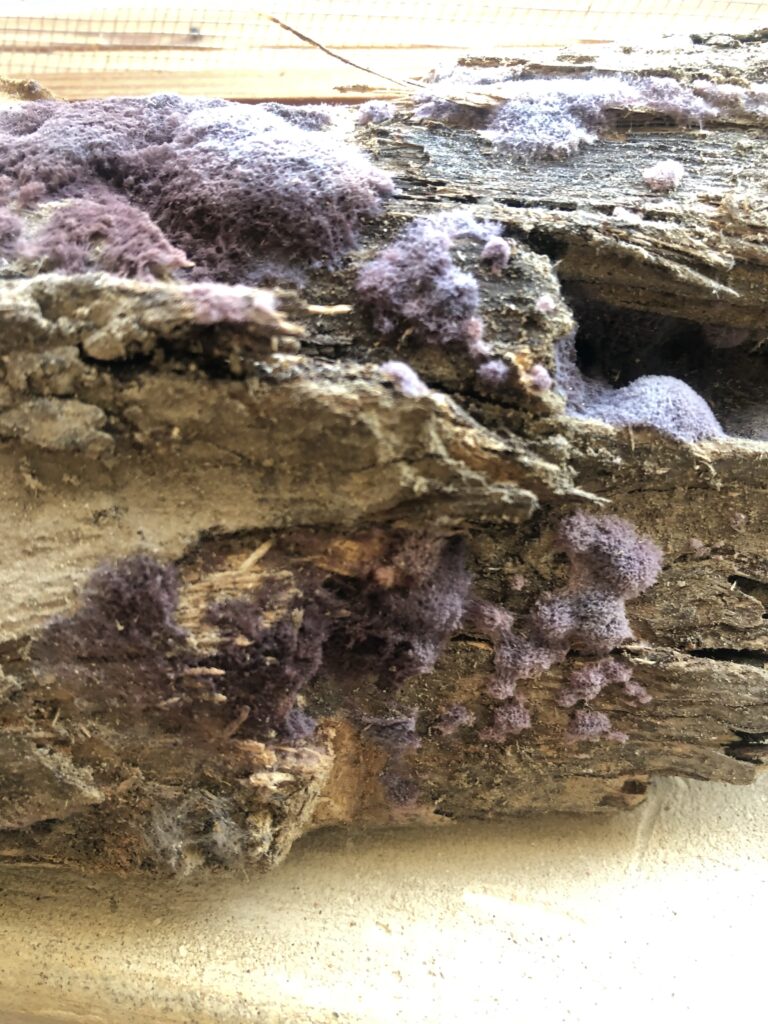
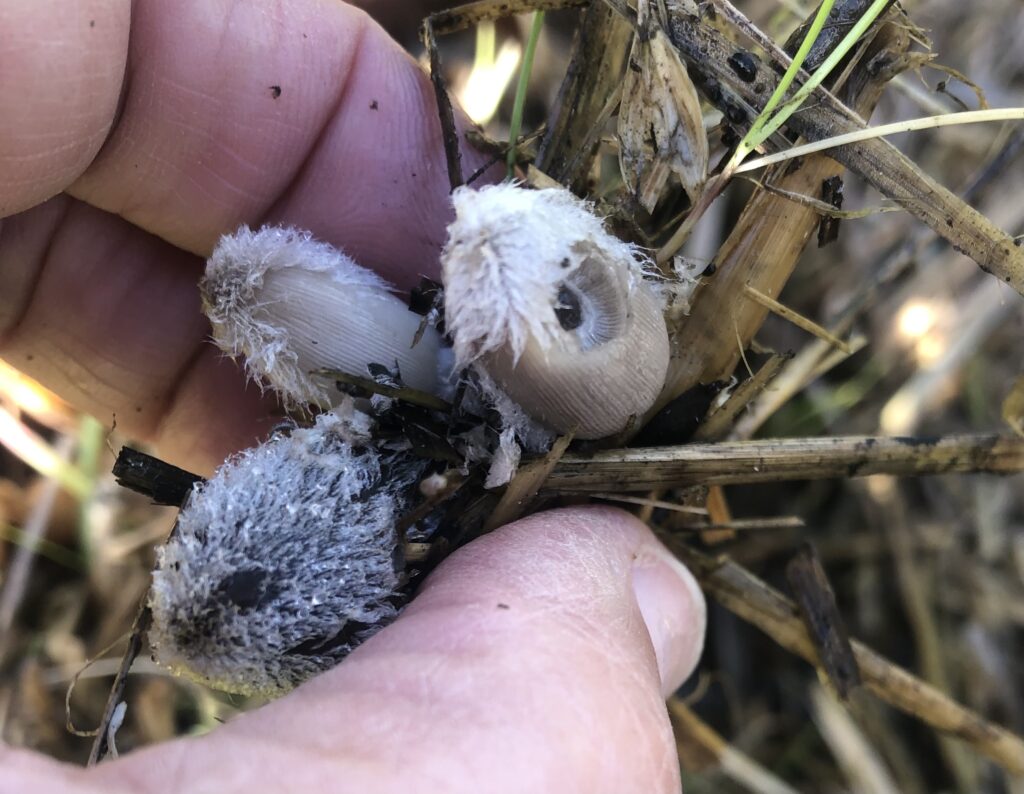
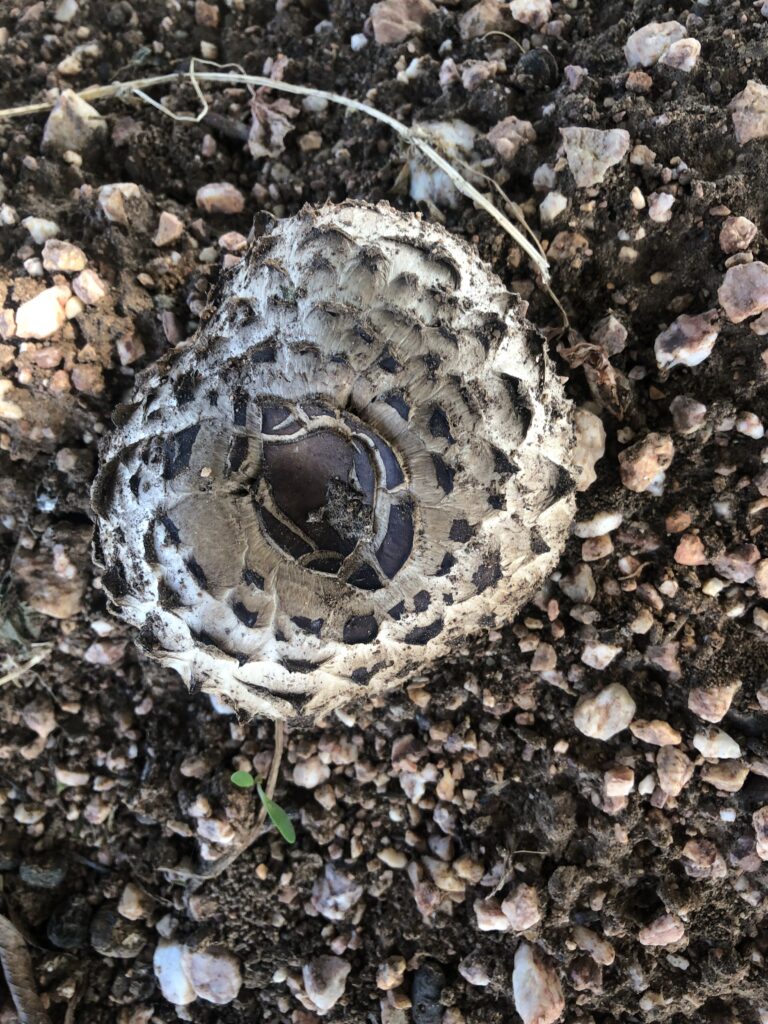
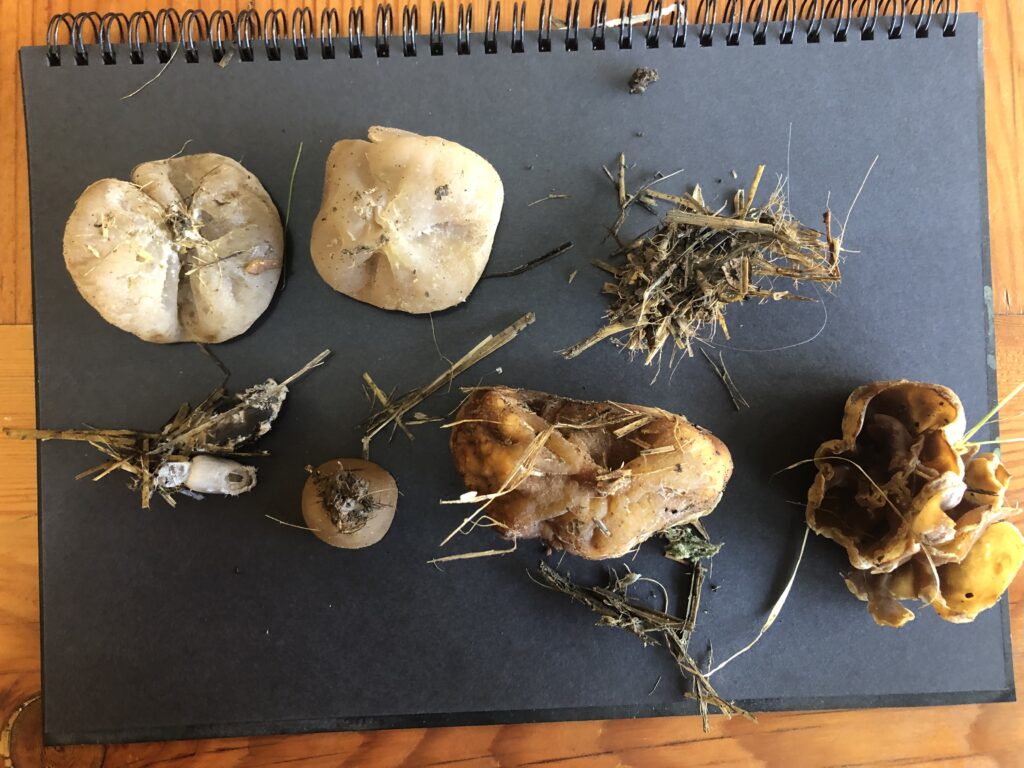
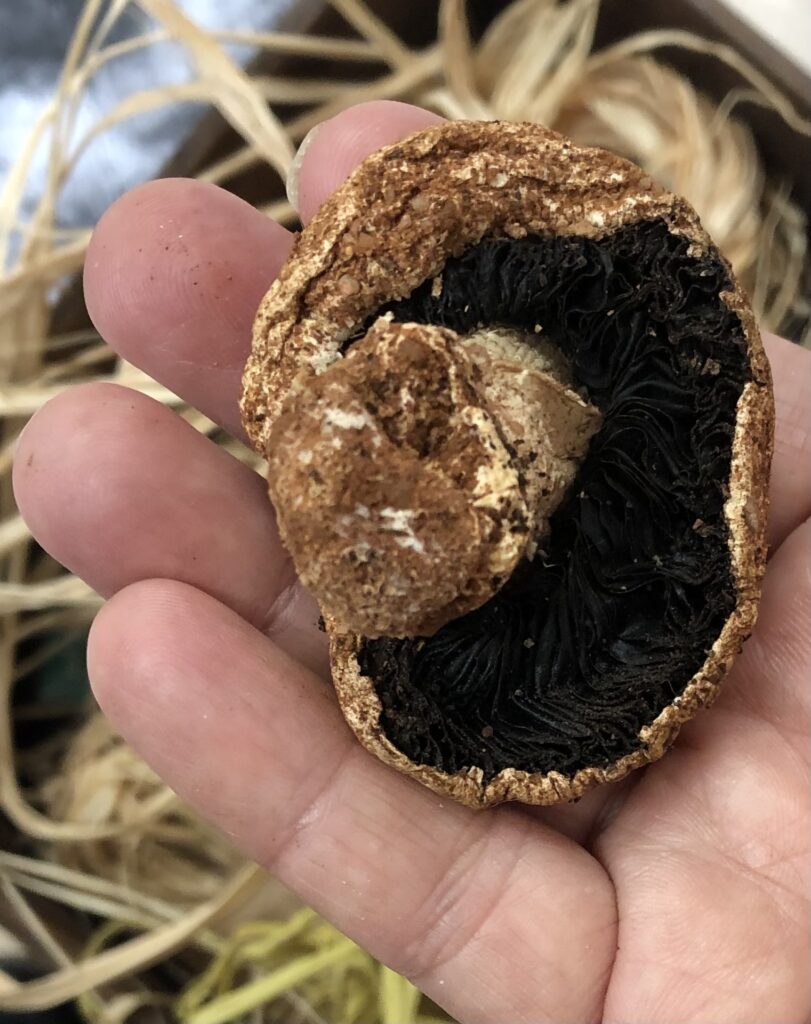

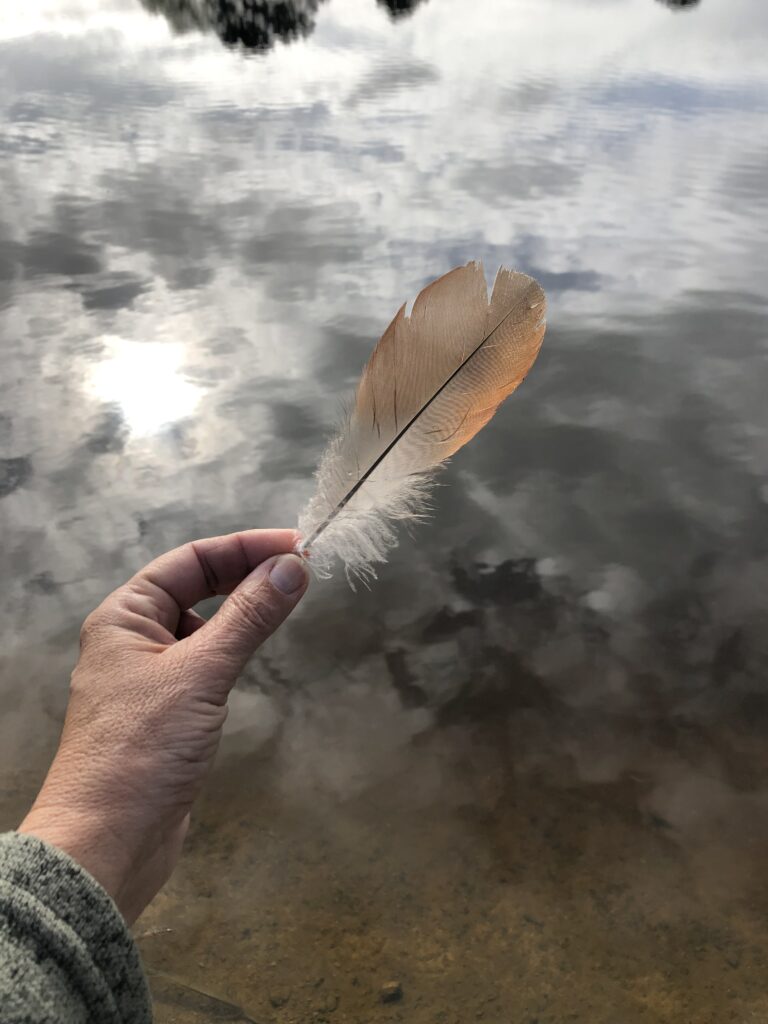
ps: I believe this working process took me to bird nests – I see them as found objects in nature, and by closely observing them, I found my way of making by ‘learning’ from them.
.
I could look at carbon levels in my garden area, where I plan to make the fungi circles. I can also make a comparison test of the carbon levels over time. My neighbour is a soil specialist and is willing to lend a hand in my project.
research work of Jenifer Talbot (https://www.bu.edu/articles/2016/soil-fungi/)
After a recent camping trip to Southern Namibia, I started thinking about cause and consequence when I considered comparing fairy rings and fairy circles – both are circular phenomena. Whereas fairy circles are barren sites, fairy rings are a brighter green than the surrounding grass and are often circumscribed by a ring of mushrooms. Fairy Circles are between 2 and 5m in diameter and occur over thousands of square kilometres in Namibia and southern Angola. These circles can be described as beautiful, intriguing and enigmatic. Scientists are not sure how these circles are formed and how they got there, or why they stay there is still unresolved. I see this as an opportunity to bring in new stories based on ideas of the Carrier Bag Theory of Le Guin – history and culture can converse. Below is an exploration I hope to transpire into making:
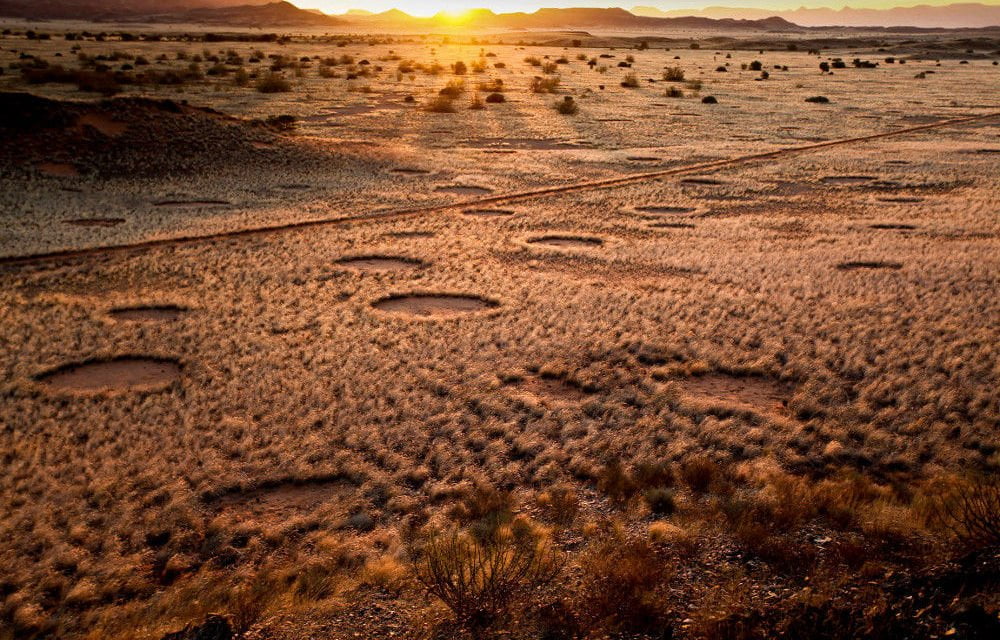
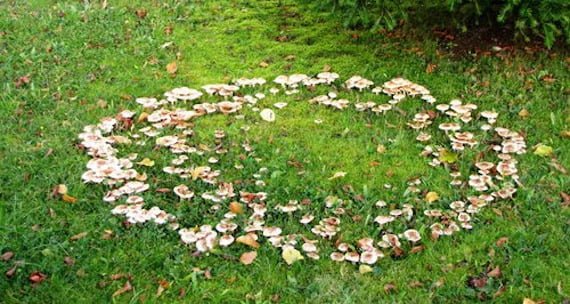
Fairy Rings?
The fairy rings are known in Europe as ‘ronds de sorcière‘ (sorcerers’ rings) in France and ‘hexenringe‘ (witches’ rings) in Germany. According to European folklore, stepping into fairy rings could result in bewitchment, maiming or death. In The Tempest, Shakespeare recounted the folk belief that sheep were reluctant to graze within the circles of dead and lush grass fungus creates. Prospero addresses the Elves of the Hills:
You demi-puppets that by moonshine do the green-sour ringlets make,
Whereof the ewe not bites, and you whose pastime is to make midnight mushrooms.
We know that mycorrhizal fungi, which live in symbiotic partnership with trees, form fairy rings. Large rings are created when the older mycelium in the centre exhausts the soil nutrients and dies. On the death of the central mycelium, the nutrients are returned to the soil, and grass can grow again. The live edge of the mycelium continues to expand outward. As it grows, it secretes chemicals into the ground ahead. These chemicals break down the organic matter, releasing nutrients so that the mycelium will have food when it reaches this area. The grass at the ring’s outer edge also benefits briefly when the extra nutrients make the grass darker green, taller, and thicker than the rest of the lawn or pasture. This lush grass dies when the mycelium grows under it and uses the nutrients.
I encountered my first fairy ring here on the farm on a piece of lawn and identified the mushrooms as Fairy Ring Champignons or Scotch bonnets (Marasmius oreades). These are small fruiting bodies and taste bitter. I have also learned that this species is saprobic – thus live off other organic materials (They act as decomposers). The spore print is white. Not all were growing in ring configurations. I have seen them again this season, in the same spot and made the work below as inspiration.
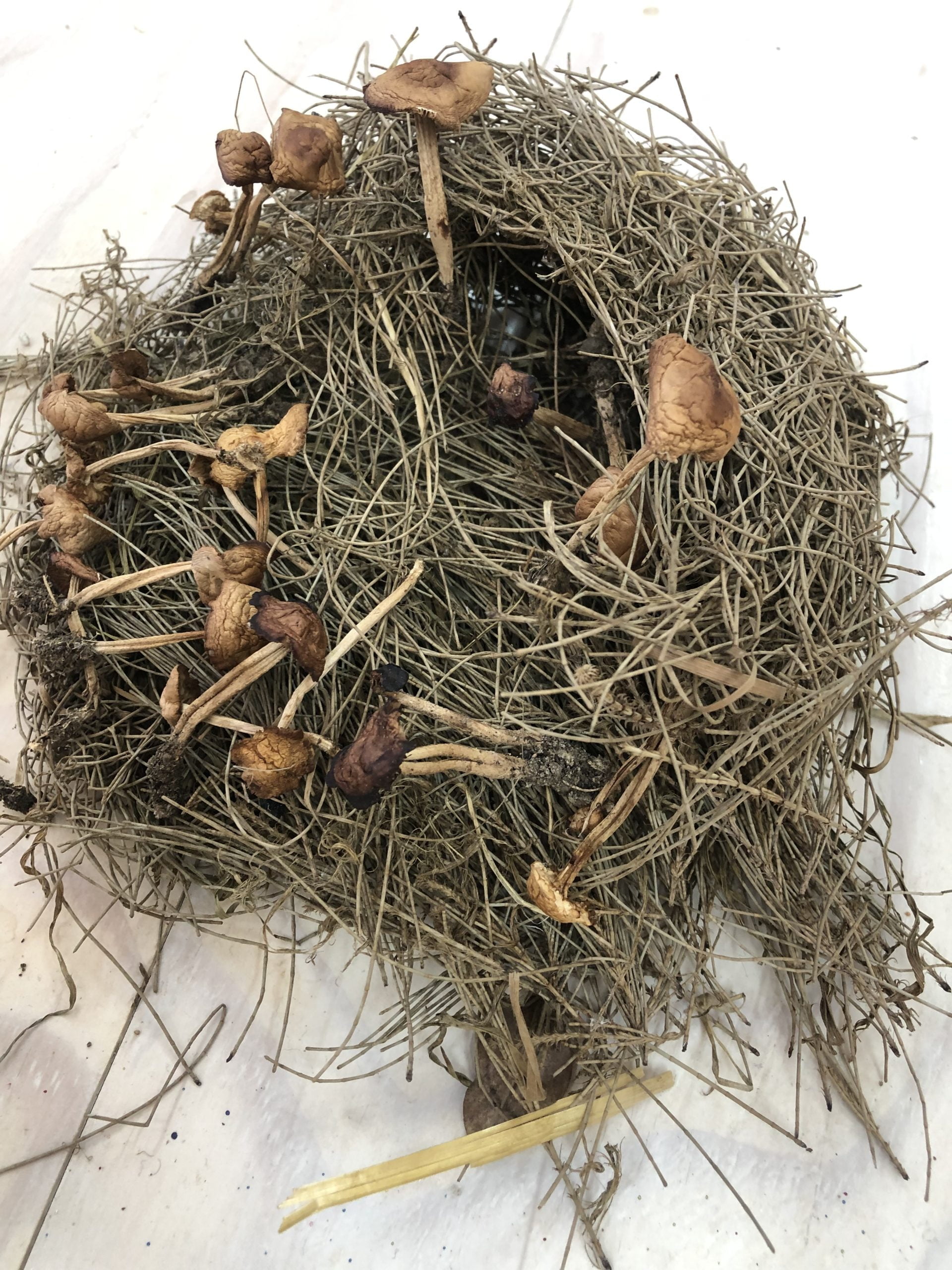
Fairy Circles?
Fairy circles ( FC’s) are barren sites in Namibia, Northern Cape and Australia. The Himba people of Northern Namibia believe these nearly lifeless circles are the footprints of their god, Mukuru. The Nama tribe in the Southern part of Namibia believe dragons caused the circles. When I first saw these circles, I read that dancing fairies created magical circles overnight and convinced my youngest son, then only five years old, to dance with me in these circles. These were fond memories during a recent visit (June 2023).
Outside of Indigenous folklore, explanations range from termites eating the grass to poisonous gases to plant-killing fungi or plant competition for water, or even UFOs! Scientists would call these phenomena ‘self-organizing’ vegetation. The latest published research refers to stress due to water shortage. In the Namib fairy circles case, established grasses draw water from the centre of the ring, soaking up the available resources and leaving the newly germinated grass to die in the centre.
Dr. Stephan Getzin, an ecologist at the University of Göttingen in Germany and an author of a new study on fairy circles, has found strong evidence that plant water stress is the cause of the mysterious fairy circle formations. His research was published in Perspectives in Plant Ecology, Evolution and Systematics in October 2022.
Here in South Africa, at the University of Pretoria, a recent study done by Prof Cowan and his team investigated the cause of fairy circles and have their theory: they think that plants growing inside the circles could be dying as a result of plant pathogens – the presence of pathogenic microorganisms such as bacteria, fungi or viruses in the soil. Prof Cowan thinks these fairy circles are unique to Namibia and southern Angola and that similar “structures” found in Australian deserts don’t necessarily mean they have the same causative basis. (March 2023). “Interestingly, some of the unique fungal species found only in the soils inside the fairy circles are known to plant pathogens, though this is also not final proof that they cause the circles,” Prof Cowan explains that proof would only come from the isolation of these fungi as cultures and proof that they infect and kill the plant species. ( To me, this is interesting as this reminds of the fungi fairy rings?) He also mentioned in his comments that the circles appear to have a lifespan – they grow (expand) with the death of grass plants around the outer margin (which makes the circle larger). Plants around the edges of the circles grow taller and more robust than those outside, probably because they have less competition for nutrients and water until they die as the circle expands. (https://www.up.ac.za/research-matters/news/post_3118848-microorganisms-could-be-the-cause-of-fairy-circle-phenomenon-up-microbiologists-)
In a very recent study in Australia, published in Nature, Ecology and Evolution (published on 03/04/2023), it was shown what the Aboriginal coauthors of this paper have always known that fairy circles in the Western Deserts of Australia are flat, hard “pavements” inhabited by spinifex termites (Drepanotermes species). (https://www.nature.com/articles/s41559-023-01994-1)
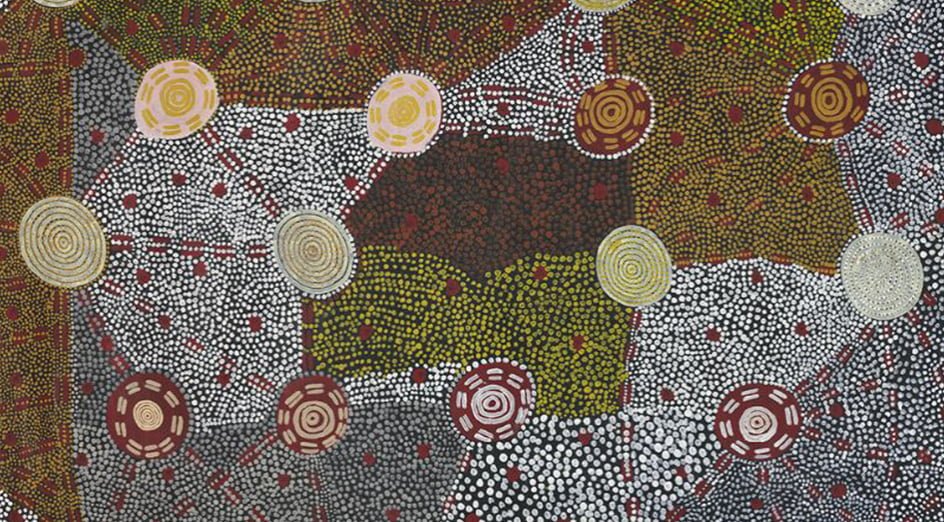
In this study, the authors refer to more than 80 paintings by 34 artists on flying termites and pavements in spinifex. Painting by Anmatyerr, Warlpiri and Arrernte man Kaapa Tjampitjinpa, titled ‘Watanuma’ (edible flying termites) shows regularly spaced termite pavements. It predates recorded plane, drone and Google Earth observations of pavements. Synthetic polymer paint on canvas, 202.4 x 171.8 cm. (1976), National Museum of Australia, copyright: estate of the artist, licensed by Papunya Tula Artists and Aboriginal Artists Agency.
What I find interesting for my research is that the scientific explanation also indicates that we still don’t fully understand the whole story of how and why these rings occur. It almost seems to my novice mind that it is the exact cause: a matter of depleted nutrients, weather conditions and a form of survival adaptation within this circumstance.
I agree and accept that plants can make decisions according to their needs and survival and learn and adapt in this process. This is the most fascinating space to encounter within my work. At the moment, I am also contemplating how I have to adapt to my project concerning my broken leg and difficulty in foraging and being there where the mushrooms are growing. Time feels like it is chasing me – the cold winter season is moving along, and soon it will be too warm to find mushrooms.
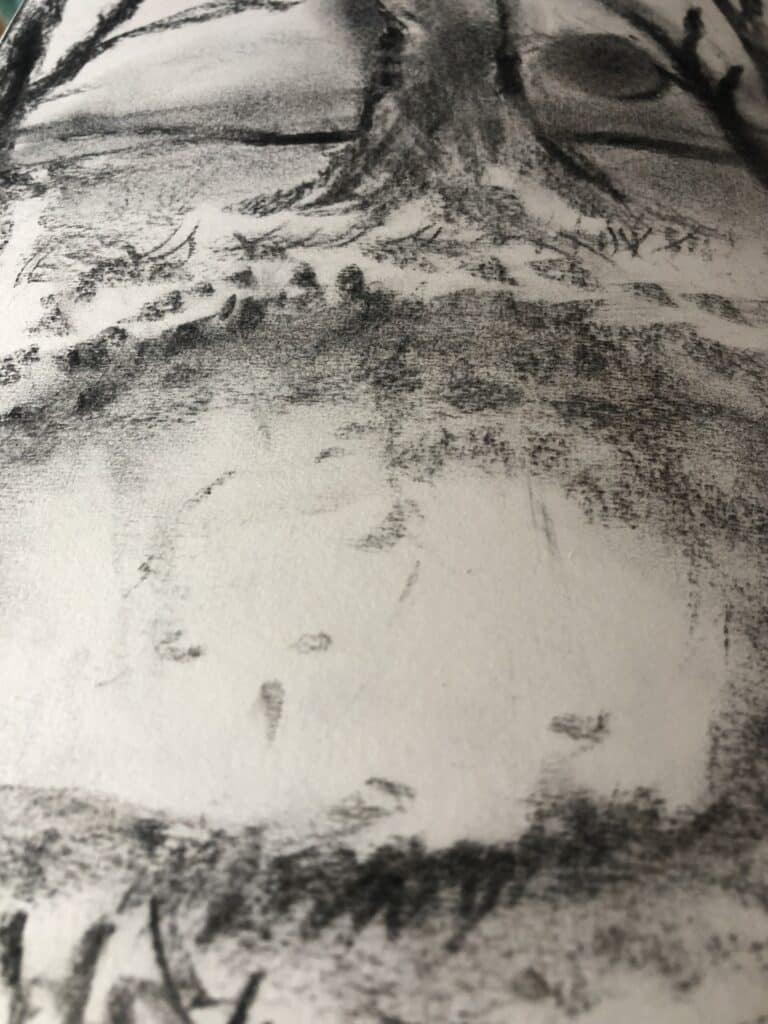
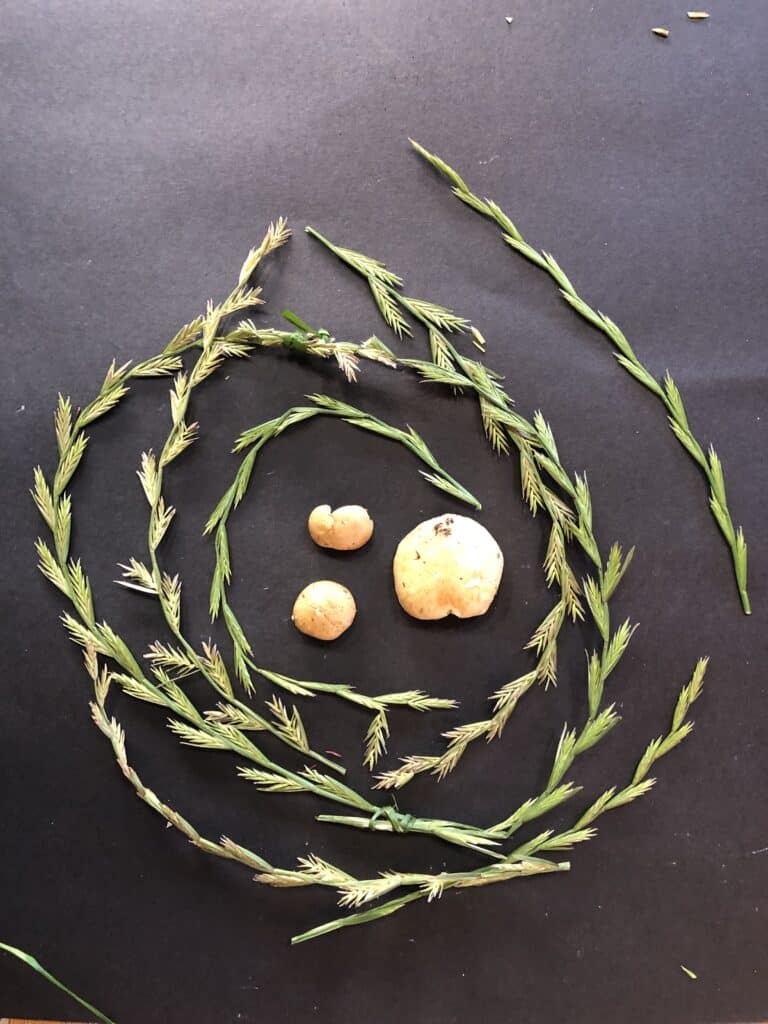
Ideas for making
I started looking into making Anthotypes with mushrooms.
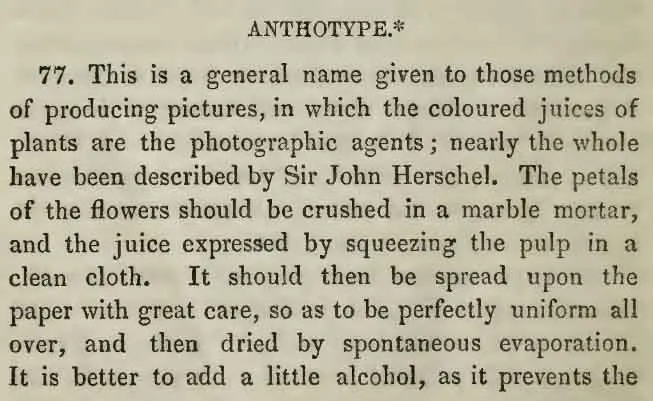
My making also helped me to contemplate on a research question. Creating a research question that explores the links between art, emotional connections, and the fragility of nature and humanity can be an exciting endeavor. Here’s a development of my research question that encompasses these ideas:
Consider how theories around interconnectedness can open new ideas for making in a contemporary art practice
“What is the role of artistic expression in evoking emotional responses and highlighting the interconnectedness, fragility, and vulnerability of nature and humanity in a contemporary art practice?”
These questions allow me to delve into various aspects of my interests. I will be able to explore different art forms, mediums, techniques, and their impact on viewers’ emotions. Additionally, I can consider to investigate how art can convey messages of environmental conservation, social issues, or personal experiences, emphasizing our interconnected world’s fragile and vulnerable nature.
I must remain open to new insights and adapt my approach as I discover more about the topic.
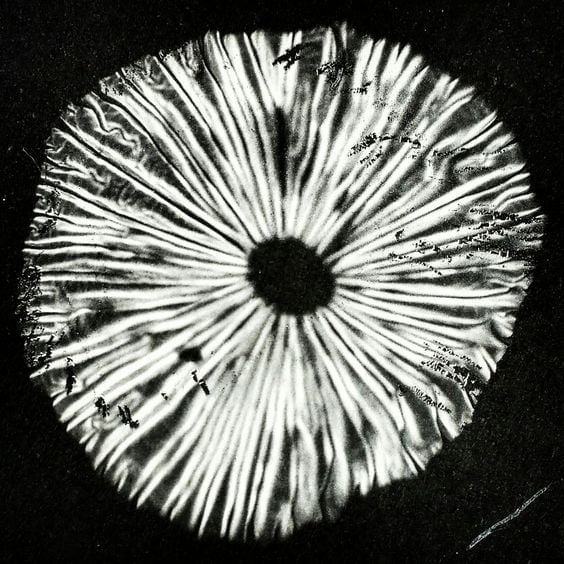
Ideas around healthy soil
Mushrooms are the reproductive structures of fungi and can indicate healthy soil for trees and other plants to grow in.” The mycorrhizal filaments of fungi also produce organic compounds that glue soils together and improve their structure and porosity to enhance root growth. In addition, mycorrhizae in the soil have been found to suppress soil-borne pathogens and protect plants from root diseases.
Fungi and bacteria play an integral role in the earth. They break down complex organic compounds of proteins, carbohydrates and fats into their most essential elements that other generations of organisms can use.
“Plants don’t have mouths or stomachs,” Dunham said. “They rely on soil fungi and bacteria to digest nutrients for them. In return, they feed soil organisms with sugars they make in photosynthesis.”
Underground, below the mushrooms, are thread-like networks called hyphae. Some attach to plant roots, creating filaments that reach far into the soil, increasing the surface area of plant roots up to a thousand times. Fungal hyphae and plant roots working together are called mycorrhizae.
I want to bring in my reading and understanding of Tsing ((The Mushroom at the End of the World) as insights from this book made me aware of the effects of what she calls ‘modern capitalism” and that she calls for an ‘alternative politics of more-than-human-entanglements (p. 135). For Tsing, collaboration is about working across differences, leading to contamination. She convinced me that we as humans are not only products of this, but this is also how we survive and adapt to an increasingly damaged environment. In this way, her work compliments the ideas of Donna Haraway about kinship.
I like to start working with drawings, then explore painting and or 3d objects I could create in reaction to the work made: Artists’ books as sculptural objects
Idea for a painting: Look at leaf litter, then roll over and look closely for the fine cobwebby tapestry holding it together. That is fungal mycelium.
https://www.youtube.com/watch?v=ii06s..
Meg Viney. http://deborahmilligan.blogspot.com/2010/10/meet-meg-viney-australian-fibre-artist.html)
The Unknown Voice
Katie Paterson: making ideas. I love her use of time – ideas about deep time.